- Santiago de Chile
- Santiago de Compostela
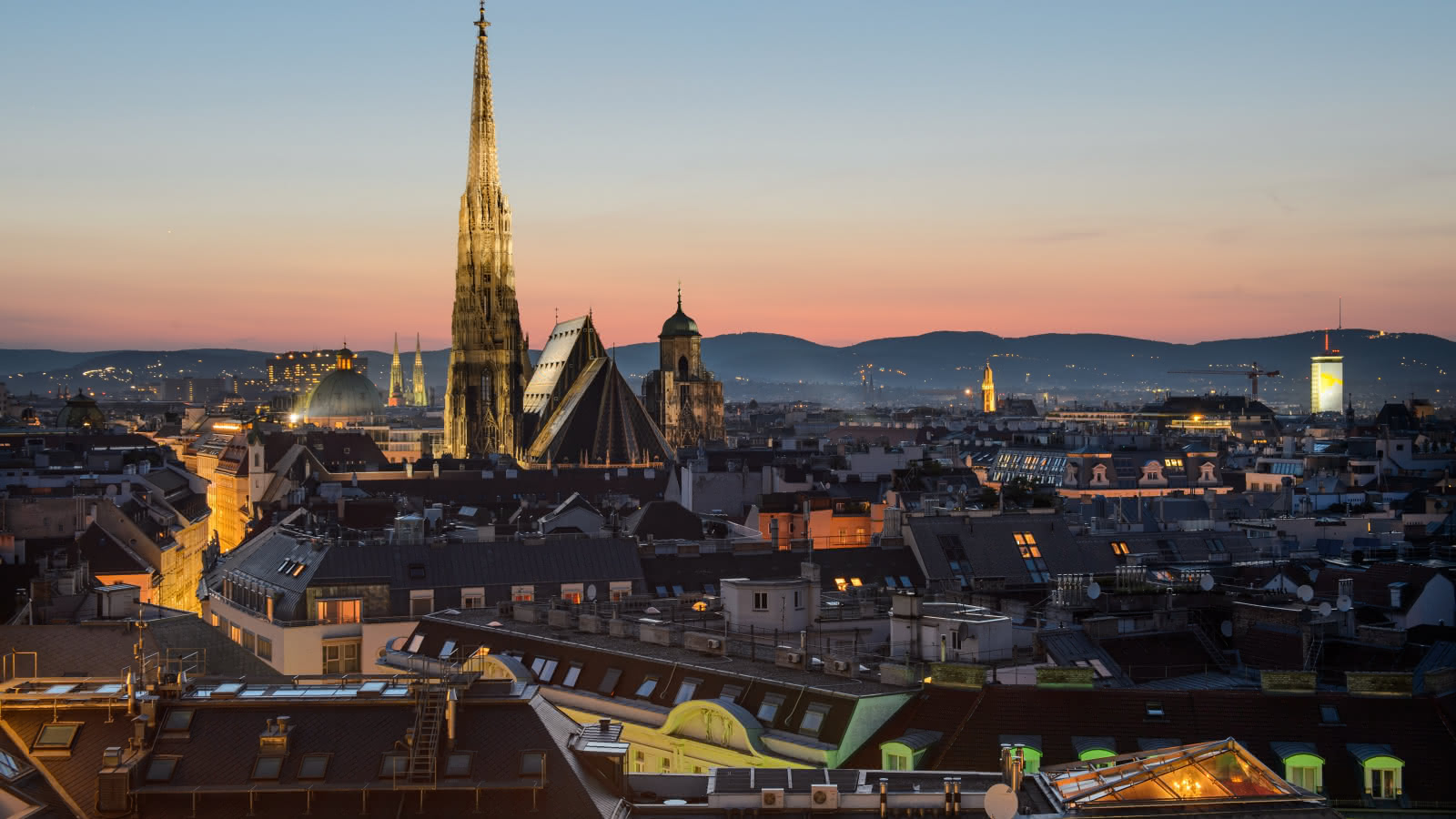

Vienna by Night Free Walking Tour
Admire Vienna’s historic buildings, illuminated beautifully by night, on this 2 hour free walking tour.
ABOUT THE Vienna by Night Free Walking Tour
This tour is operated by our partner Prime Tours Vienna.
On this 2-hour free tour you’ll join your qualified local guide to admire the beauty of Vienna’s stunning streetscape, illuminated spectacularly at nighttime! See all the main sights from an enchantingly different perspective, showing old-world Vienna at its romantic best.
The Free Walking Tour: Vienna by Night starts at Helmut Zilk-Platz and ends near St Stephen’s cathedral.
Stunning illuminations
Vienna’s beautiful buildings are shown at their absolute best when lit up during the quieter evening hours. Wander through the romantic streets with your guide and see iconic sights like the State Opera, home to some of the most glamorous balls and concerts in Europe. Stroll past the Albertina and Hofburg palace and learn about these icons of the Habsburg dynasty in Vienna. Admire the elegance of St Stephen’s Cathedral, its famously colourful tiled roof looking even more radiant in the evening light.
Enjoy Vienna’s sights and stories in the romantic evening atmosphere with your expert guide and take in everything the city has to offer at a more relaxed pace, before finding a cosy place to enjoy a glass of crisp Austrian wine and a classic Wiener Schnitzel!
Discover the top sites in Vienna with these tours offered by our partners, Prime Tours Vienna. While you may not see the famous SANDEMANs red umbrellas (look instead for the yellow Prime Tours umbrellas), we only work with partners we know, trust, and who have been vetted by us to ensure they meet the same standards you are used to enjoying in SANDEMANs’ own cities. We are proud to partner with Prime Tours Vienna and are sure you’ll love their tours as much as we do!

The Vienna by Night Free Walking Tour starts at Helmut Zilk-Platz and ends near St Stephen’s cathedral.
- Admire Vienna’s historic buildings, illuminated beautifully by night
- Stroll past the world-famous State Opera and hear about famous performances and events
- Wander through the lit-up courtyards of the Hofburg palace and learn about the glittering days of the Habsburg Empire
- Marvel at the Baroque facade of the National Library, home to Austria’s national collection of over 12 million books and artefacts
- Enjoy the evening atmosphere of one of Europe’s most romantic cities
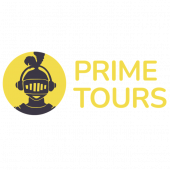
Prime Tours is our vetted partner in Vienna - Austria
- Local English-speaking licenced guide
- Gratuities for the guide (optional)
- This activity is operated by our partner Prime Tours Vienna. This experience is not provided by SANDEMANs, but has been chosen by our specialists from an array of offers based on their quality and value
- Please arrive at the meeting point 10 minutes before the tour starts
What is the SANDEMANs Partner Network?
Tours in Vienna are offered by a partner, not SANDEMANs NEW Europe.
We only work with partners we know, trust, and who have been vetted by us to ensure they meet the same standards you are used to enjoying in SANDEMANs’ own cities.
We are proud to partner with Prime Tours Vienna and are sure you’ll love their tours as much as we do.
Book a tour with one of our partners
- SANDEMANs only works with partners that meet the same quality standards than us
- Tours are chosen by our specialists from an array of offers based on their quality and value
- We connect the best local guides with travelers from all around the world
WALKING TOURS & ACTIVITIES IN VIENNA
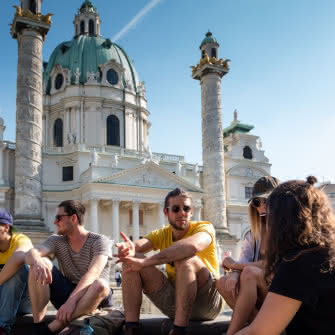
Free Walking Tour: Vienna 1900
Discover Vienna’s heyday of art and intellectual life during the first half of the 20th century on t ...
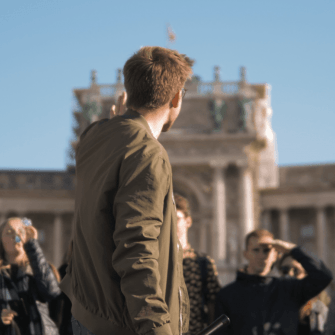
Free Tour of Vienna
Explore Vienna Old Town on this 2-hour free walking tour
Lorem ipsum dolor sit amet, consectetur adipisicing elit, sed do eiusmod tempor incididunt ut labore et dolore magna aliqua. Ut enim ad minim veniam
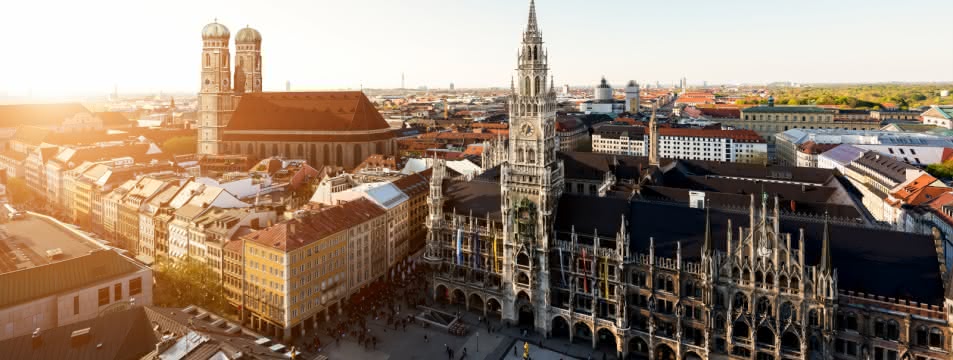
Thank you! Your support means more to us than we can express in words. Chris Sandeman and the SANDEMANs Live Community
Give anything you want
Wrong price format. Please enter a valid price.
Please enter a price greater than 0.
Payment is secured with
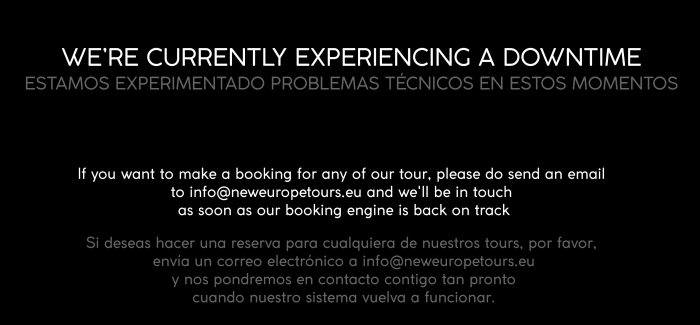
16 Unmissable Things To Do In Vienna At Night
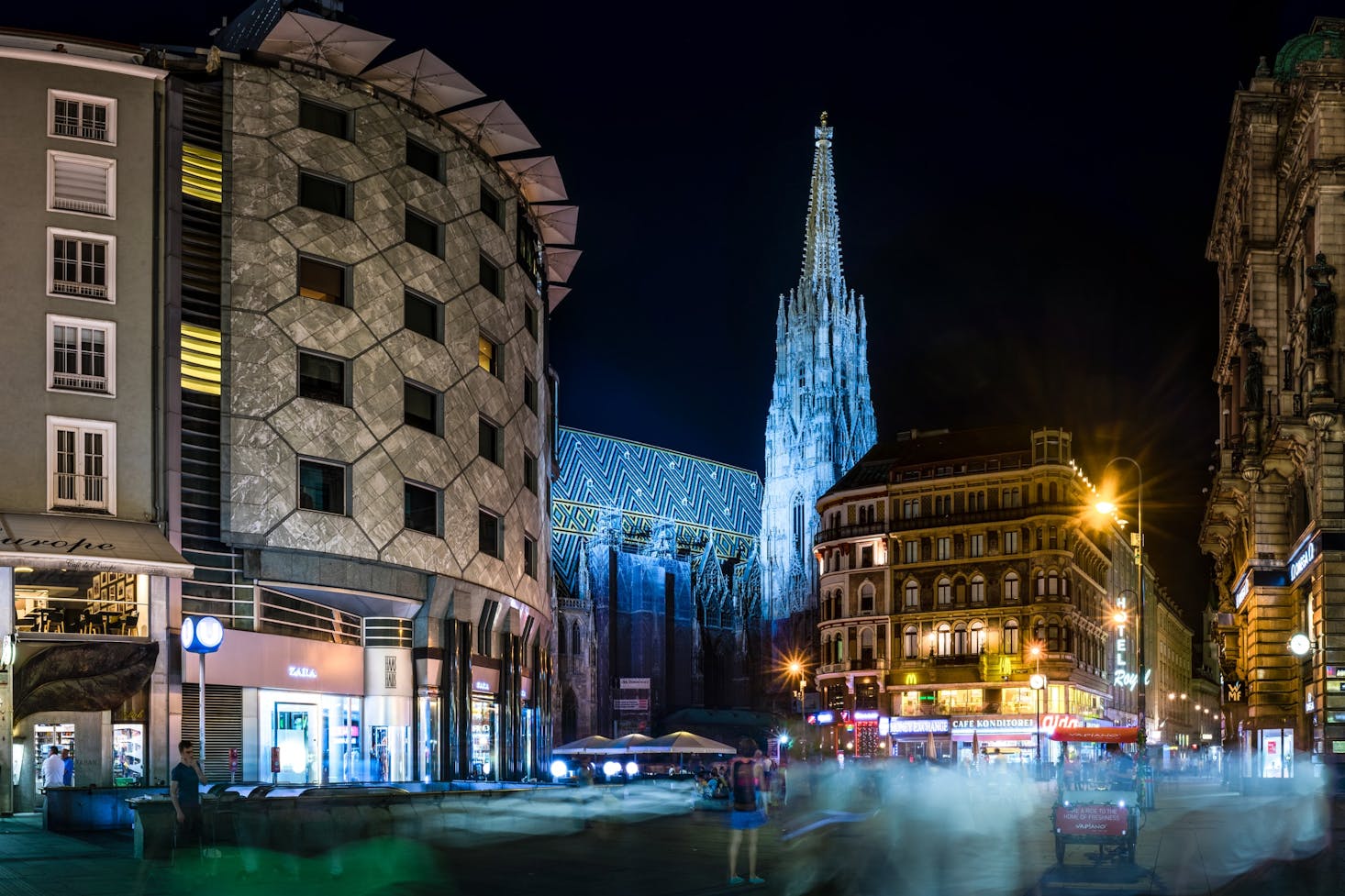
Located in the eastern area of the country, Vienna is the capital and the largest city of Austria with more than two million residents. But it never looks crowded, maybe because of the many open spaces, parks, and other green spaces. There are many things to do while visiting Vienna during the daytime, but you do not have to go back to your hotel and stay in after dark.
There are also plenty of things to do in Vienna at night. Walking along the Danube River on a warm Vienna night is a fantastic way to end a fun-filled day of sightseeing, or you could take a walking tour to find the local hot spots. You can even visit some of the main attractions during the nighttime.
If you want to see the city lights at night, take a ride on the giant Ferris wheel in Prater Amusement Park or the Danube Tower. You get a breathtaking view for miles in the clear night sky including Stephen's Cathedral, Vienna City Centre, the Imperial palaces, and the rest of the beautiful city.
Another way to enjoy the nights in Vienna is listening to classical music at a Mozart concert in Danube Park or putting on your dancing shoes and hitting the dance floor at one of the trendy rooftop bars in the city. It seems there is a rooftop bar everywhere you look in Vienna. The most popular is the one at the Sacher Hotel where you can visit even if you are not staying there.
Vienna comes alive at night with the sounds of music, laughter, and excitement as the locals head to the clubs and local bars. The city is full of rooftop pubs and world-famous cocktail lounges. But Vienna is more than just a partying place to be. There are also a variety of attractions, restaurants, shops, and museums to visit as well. Whatever you choose to do, be sure to drop off your large bags at a Vienna luggage location locker first. You certainly don't want to bring them along on a night out on the town!

Love discounts and traveling?
Sign up for our newsletter and get 10% off your next booking.
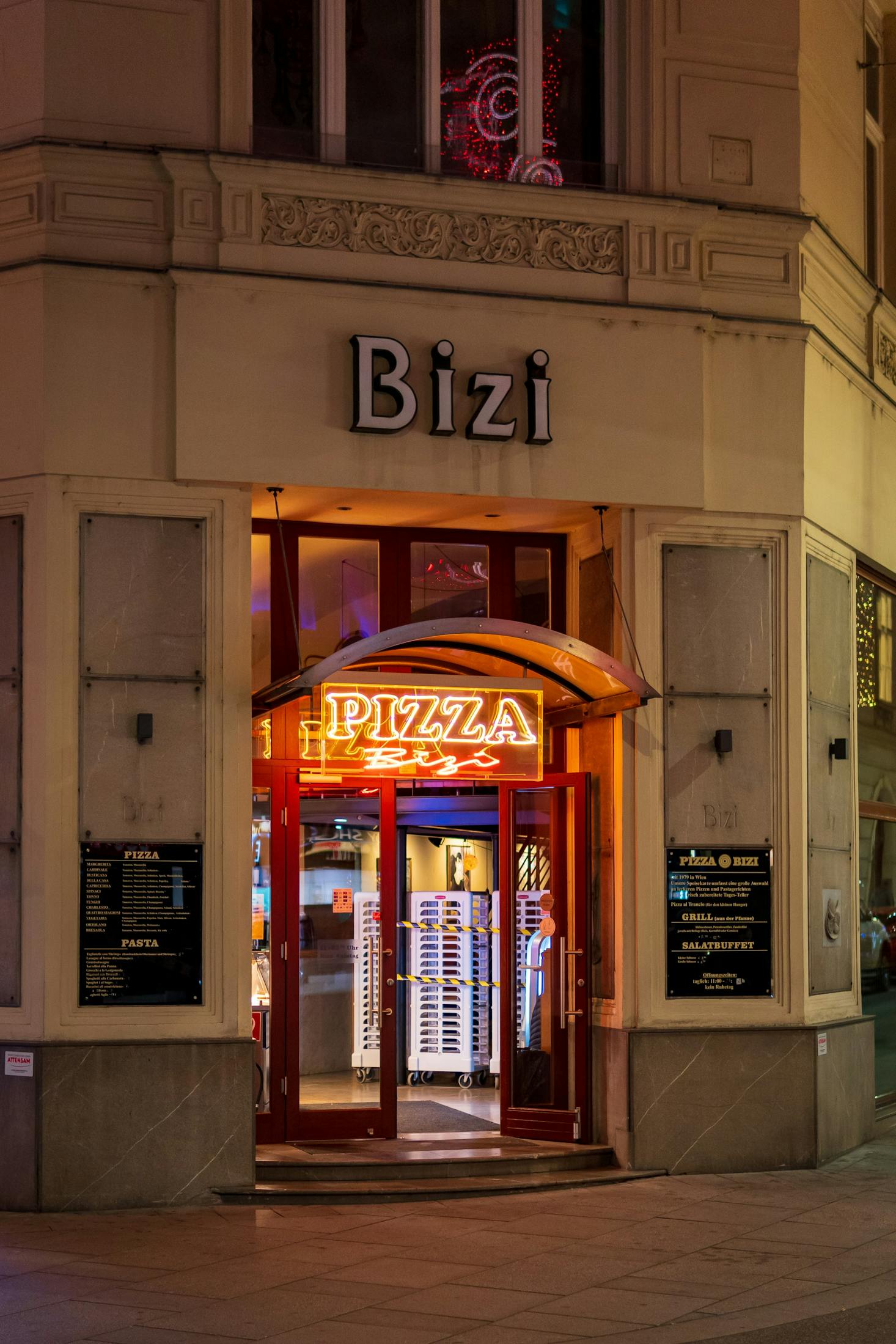
The Burgtheater
The Burgtheater is only open until 6 PM so this should be your first stop of the night. It was first known as K.K. Theater an der Burg until 1918 and then the K.K. Hofburgtheater and is the national theater of Austria in Vienna. It opened in 1741 after the first theater was destroyed by fire in 1525.
This is considered to be the most important German-speaking theater as well as one of the most popular in the world. As you explore, be sure to see the four works of art by Gustav Klimt that include the Theatre in Taormina, the Altar of Dionysus, Shakespeare's Globe Theatre, and the Cart of Thespis. Also, do not miss the sculpture collection as well before heading into the 1,200-seat theater to enjoy the show.
Vienna State Opera
Classical music fans have been visiting the Vienna State Opera since 1869. Also known as the Wiener Staatsoper, it is one of the busiest opera houses in the world lauding up to 60 operas and 10 ballet performances a year with over 350 performances in total. If you do not have tickets, don't worry, they sell standing-room-only tickets about an hour before each show.
The Wien Philharmonic is known all over the country with performances selling out in one day. Some of the guests like to put on their fancy frocks to get some selfies in the stunning lobby and on the beautiful marble staircase at the Opera House of Vienna. You may never get an opportunity like this again, so do as the Vienna locals do and come prepared in your formal attire.

Casino Royal
The Kärntnerstrabe Casino can be found between the Vienna State Opera and the Stephen Dome. The Casino Wien is located in the beautiful Palais Esterhazy is part of the Casinos Austria. It is the largest and most traditional casino in Vienna and is a favorite for enjoying dinner and drinks as well.
Where else can you go play the slots and have an extravagant meal with no dress code? Chef Lukas Olbrich is an award-winning chef with a menu lauding venison steaks, prawns, chateaubriand, and sea bass. After dinner, try your luck at some of the games. The main casino is on the upper floor and features a poker room, baccarat, blackjack, roulette, and slots.
Vienna Museum of Illusions
Not all museums are full of relics and paintings. The Vienna Museum of Illusions is a place to play and learn at the same time, and it is not just for kids. In fact, some of the rooms may be difficult for the younger crowd to enjoy. For example, the Vortex Tunnel will make you feel like you are going to fall and the Head on a Plate is a little bit gruesome for the kids.
See holograms, photo illusions, and optical illusions as well as things that will bend your mind like the Chair Illusion and the Bottomless Pit. The most popular are the Upside Down Room, Tilted Room, and Infinity Rooms, which are perfect for unique selfies.
Chilling at Donaukanal
For a night of drinking, dining, and dancing on the riverfront, check out the Donaukanal, also known as the Danube Canal. It is a little slice of the Danube River in the old city of Altstadt where you can walk along the water or pull up a chair in one of the cafes to people watch.
One of the most popular with young people is Badeschiff, which is made from two barges with several decks including a floating swimming pool. Grab a cocktail and swim in the water while you are on the water. Or try the Strandbar Herrman, where you can enjoy a drink on the beach.
Ride a Giant Ferris Wheel
This gigantic Ferris wheel, called Wiener Riesenrad, is 2,500 feet tall and you can get the best view of the city from there. It was built in 1897 for Emperor Josef I Golden Jubilee but is now a famous attraction for visitors and locals alike.
Not only does this giant Ferris wheel take you up to see the sights, but it also has private cabins, candlelit dinners, and cocktails in the air. You cannot miss this Vienna attraction as it can be seen for miles and is at the entrance of Prater Amusement Park.
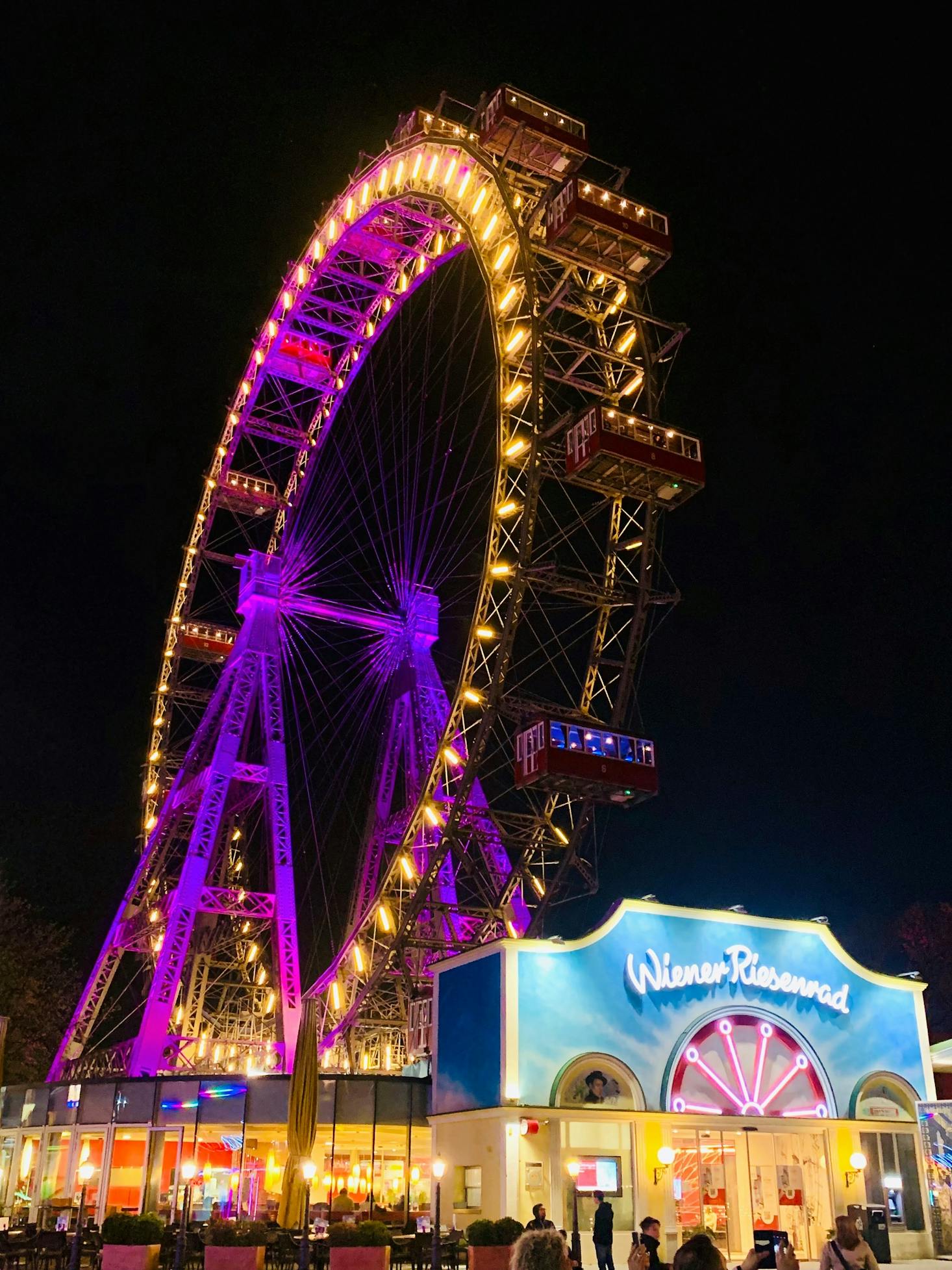
Prater Amusement Park
Prater Amusement Park never closes, so you can get some thrills there any time of the day or night. Among the 250+ attractions, you can find the strongest roller coaster and largest fairway in the world at the oldest amusement park in the world, opening in 1766.
You do not have to be a child to enjoy this park, and some of the rides are not suitable for children so you know you will get some of your best thrills at Prater. From the Admiral Arena Prater gaming house to the Windobona Sky Diving experience, this place will amp you up.
Schönbrunn Palace
What began as a hunting lodge turned into the summer residence of the Habsburg family and is a Rococo Baroque beauty from the 1600s. Today, it features 1,441 rooms and is one of the most important historic, cultural, and architectural monuments in Austria. Besides the palace, the gardens are also majestic and should not be missed.
Schönbrunn Palace is one of the country's best landmarks, representing over 300 years of Austrian history. The palace and grounds are open until 9 PM, giving you ample time to enjoy the bevy of gorgeous and mysterious rooms as well as the gardens and sculptures outdoors. While you are there, visit the Café Residenz and Court Bakery, where you can enjoy apricot jam on a fresh pastry.
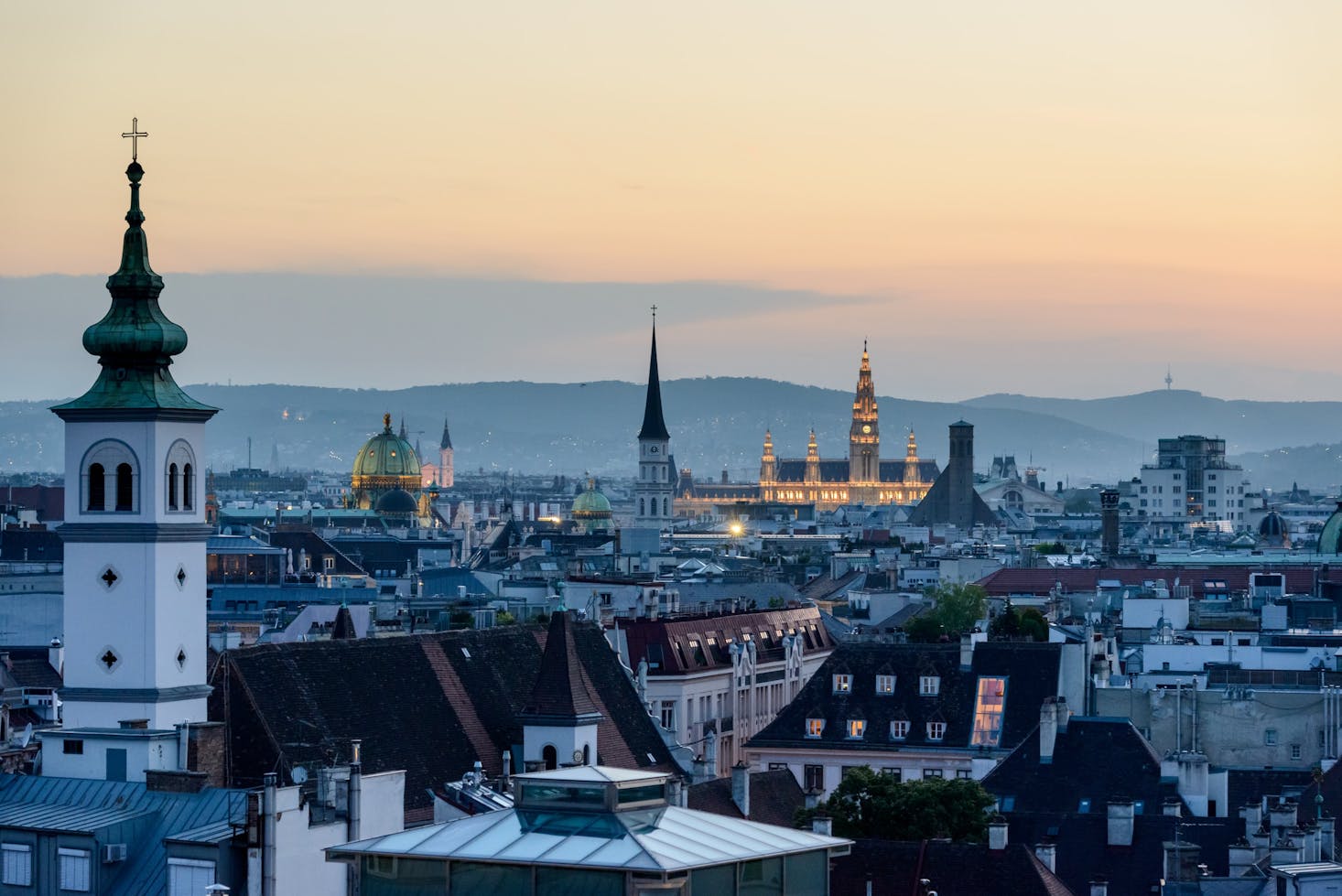
Hofburg Palace
This amazing palace was the home of the Habsburg Empire for centuries and today is boasts several museums including the Silver Collection, Sisi Museum, and the Imperial Apartments. The Hofburg was built back in the 1200s and has been the seat of government since 1279.
Facing Heroes Square, the Baroque building is a stunning work of architectural art. The palace itself features 13 wings including the Swiss Wing and the treasury, where you can see the Austrian Crown Jewels. The Sisi Museum is a fantastic place to learn more about Empress Elisabeth.
Austrian National Library
Are you a book fan or are you interested in learning more about Vienna, Austria, and Europe? Go check out the Austrian National Library, which is the largest library in Austria, located in the Hofburg Palace . This massive Baroque building has more than 11 million books and eight collections of artifacts like globes, maps, and photos.
Leopold Museum
In the Museum Quarter of Vienna, you can see one of the largest Austrian art collections in the country at the Leopold Museum. Some of the artists featured there include Richard Gerstl, Oskar Kokoschka, Gustav Klimt, and the largest collection of Egon Schiele in the world.
In fact, you can see more than 5,000 pieces collected by Rudolf Leopold over 50 years. Some of the most popular include Venus in the Grotto by Koloman Moser in 1914, Girl Crossing a Mountain Torrent by Anton Romako in 1880, and the 1905 Death and Life by Gustav Klimt.
Guided Tour of Vienna Nightlife
Day trips all over the city via the fantastic train system are great but taking a guided walking tour of Vienna at night is special, especially if you want to check out the nightclubs or enjoy a wine tasting tour while you learn the fascinating history of Austrian wine.
Discover some of the liveliest spots in the city on a pub crawl where you will visit four clubs with four complimentary drinks or take a private evening tour with drinks and dinner. You can even enjoy a bit of music culture at a Mozart concert with a four-course dinner and a carriage ride.
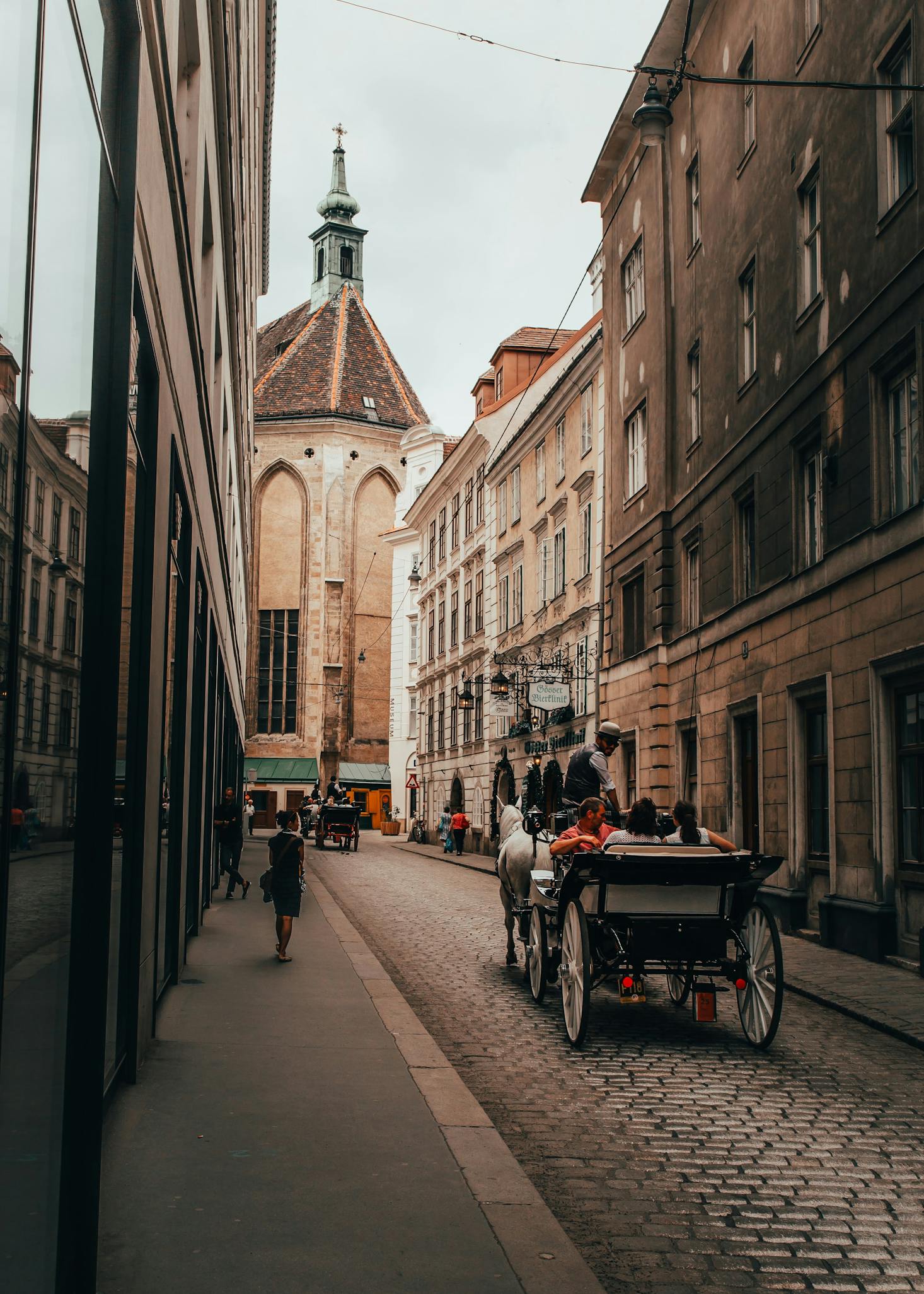
Barhopping on Schwedenplatz
You could also enjoy your own self-guided walking tour of Vienna. The city boasts many areas filled with bars, nightclubs, and restaurants in the first district where you can take yourself on a tour. You don't have to worry about following the crowd when you are exploring on your own.
Schwedenplatz is a favorite for the locals, along the Danube Canal in the center of the city where everything is hopping all night long. This section of the city also has several museums including the MAK Museum of Applied Arts, the Albertina, and the Museum of Art History.
Romantic Dinner at the Danube Tower
If you want to see Vienna from 550 feet in the air as you enjoy a luscious dinner, the Turm Restaurant can fulfill that spot on your bucket list. Watch as the sun sets over the Danube and as the skyline lights up in all its glory.
Not only are you getting a delicious dinner and delightful outlook, but the restaurant also rotates very slowly so you get a panoramic view of Vienna. This is the perfect spot for special occasions like a birthday, anniversary, or New Year's Eve. Go shopping for a marvelous new outfit and make a reservation!

Dance to Live Music at Jazzland
Where else can you dance to live jazz music in a 500-year-old cellar under a church? Vienna's Jazzland, which has been jazzing up the city since 1972, can be found in the basement of the Ruprechtskirche, or St. Rupert's Church. The church itself is over 1,000 years old and has a gorgeous Romanesque design.
Six nights a week, Jazzland features jazz musicians performing live including legends as well as new talent. Some of the most famous include Teddy Wilson, Max Kaminsky, and Big Joe Williams as well as Benny Carter and Little Brother Montgomery. While you enjoy the music, you can also enjoy some of the decadent cuisines.
Cafe Sacher
Your trip to Vienna would not be complete without a meal at Cafe Sacher. The award-winning restaurant is famous for its Sacher torte, which is a rich chocolate cake filled with apricot jam. Although it is housed in the luxury hotel, Sacher Wein, the cafe is popular with locals as well so you better make a reservation.
Rooftop Views and More
Be sure to see as much as you can during the daytime as well while you are visiting Vienna. Although nighttime is vibrant and exciting, you will be missing out if you do not take some time to see the daytime highlights of Vienna too. Everything from equestrian shows to zoological parks can fill your day before heading out to wine and dine for the night.
Once evening hits, though, be sure to visit a rooftop bar like Das LOFT, get a thrill on Wiener Riesenrad, or see an incredible Viennese opera. The possibilities are endless and nighttime is one of the best times in Vienna!
Explore the world
Get the bounce app.
Instantly find locations nearby to drop off your luggage wherever you go.
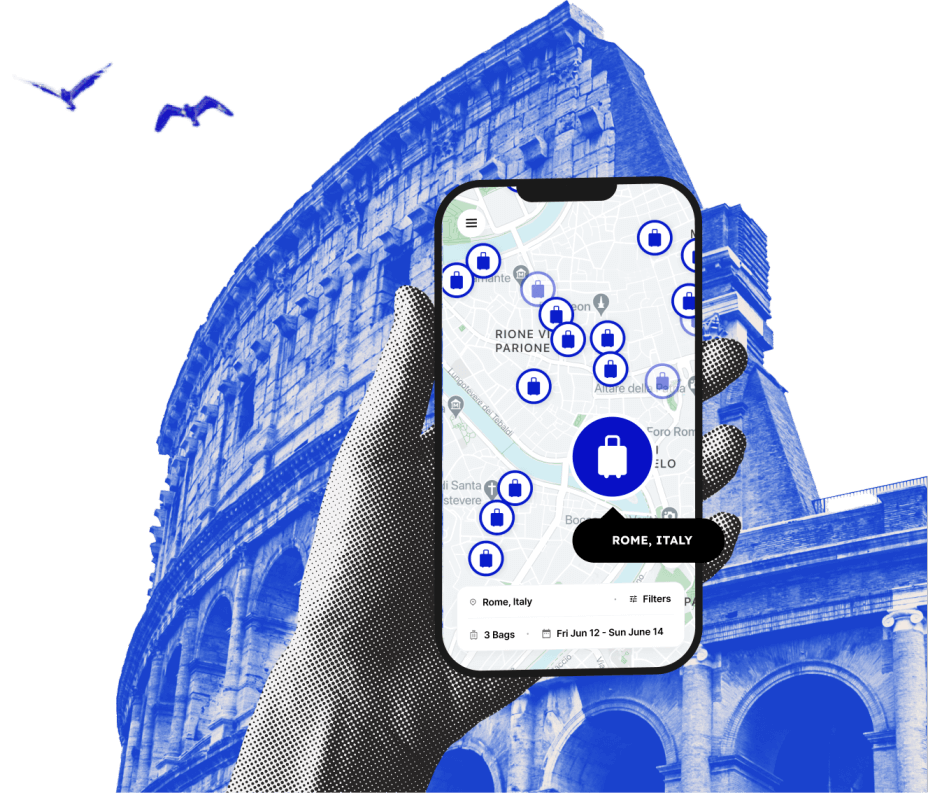

We have received your request correctly.
You will receive an email with a summary of your bookings.
Can't find it? Leave us your email and we'll send you a summary of your bookings.
Free Tour of Vienna at Night
- 8.20 / 10 1,458 reviews | 17,599 travellers Harald is a very good guide and very friendly, although you have to pay close attention to him, as his English has a lot of accent. You also have to consider being punctual! 10 Alejandra
The Austrian capital is one of Europe's most elegant cities . Discover its enchanting beauty by the light of the moon on this free tour of Vienna's most important monuments at night .
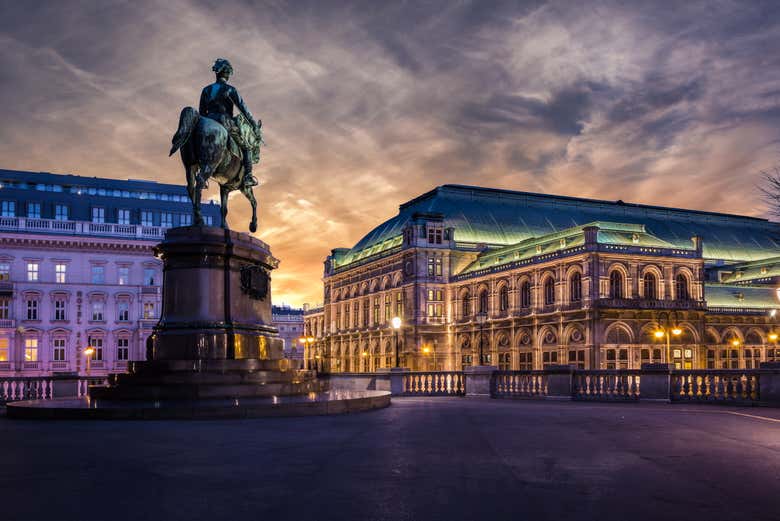
Vienna at Night Free Tour Itinerary
Meet your guide at the scheduled time in Helmut Zilk-Platz , a square in the heart of Vienna city centre with incredible history. You'll begin your free walking tour of the Austrian capital admiring the Danubius Fountain in Albertinaplatz , a monument made even more beautiful by its nightly illuminations.
Continue your guided tour to the Burggarten , an enchanting park where a famous statue of Mozart is located, before reaching the Hofburg , the Imperial Palace of the Habsburg rulers of Austria. This impressive building, built in a fusion of architectural styles testifying to its long history, is home to the residence and offices of the country's president, as well as the legendary Spanish Riding School .
Strolling through the streets of Vienna's historic centre, you'll be captivated by their elegant architecture and their night time illuminations. You'll explore Neuer Markt and Josefsplatz , considered one of the finest courtyards in the city, and visit the Monument Against War and Fascism , as well as passing by Mozarthaus , the house-museum of the world-renowned composer, and Stephansdom , Vienna's stunning Gothic and Romanesque cathedral.
It is not possible to reserve this free walking tour if you are a group of more than 4 people . If this is the case, please book our Private Tour of Vienna instead.
More Information
The activity takes place with a guide that speaks in English.
English speaking guide with expert knowledge of Vienna's history.
Not included
When to book.
You can book up to the start time, as long as there are places remaining. Book now to guarantee your spot.
Type of voucher
Electronic. Show the voucher on your phone.
Accessibility
Wheelchair accessible. This must be indicated in the reservation.
Sustainability
All services published on Civitatis are carried out in accordance with our Sustainability Code .
Our providers commit to:
- Provide a safe and satisfying experience.
- Reduce, reuse, recycle.
- Incorporate eco-conscious technologies.
- Uphold fair employment standards.
- Foster the growth of local communities.
- Preserve the integrity of local culture.
- Safeguard both cultural and environmental heritage.
- Ensure ethical treatment of animals.
- Operate with honesty and transparency.
- Encourage sustainable behaviors among customers and staff.
This particular activity contributes as follows:
- No printing of documentation required.
- Promotes local employment.
- Has a gender equality policy.
- Has a carbon footprint offset policy.
Prime Tours Show more
Corporate name: LoeX Local Experience GmbH
Not permitted.
Frequently asked questions
Q - What is the maximum number of people in the group?
A - The group can have up to 35 people.
Q - Why do this activity with Civitatis?
A - At Civitatis we guarantee the best quality and prices, click here if you want to know how we select our activities.
Q - How to book?
A - To reserve the activity, choose the date and complete the form on this page. You will receive your confirmation immediately.
Q - Is a minimum number of participants required?
A - This activity requires a minimum of 8 participants. Should this number not be reached, we'll get in touch with you to offer alternatives.
If you have any other questions please contact us.
Free cancellation
Meeting point.
Helmut Zilk-Platz, 1010.
You may also be interested in
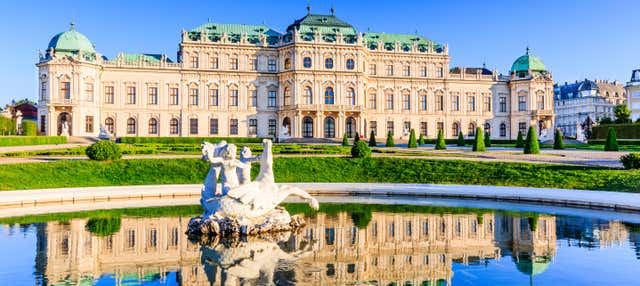
Belvedere Museum Entrance Ticket
With this entrance ticket to the Belvedere Museum, you'll visit one of the most important art collections in Austria and see famous works like Klimt's The Kiss !
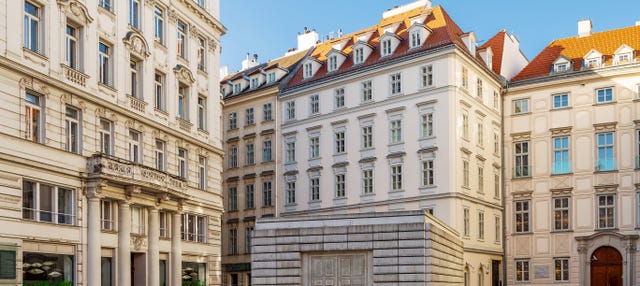
Hitler's Vienna Tour
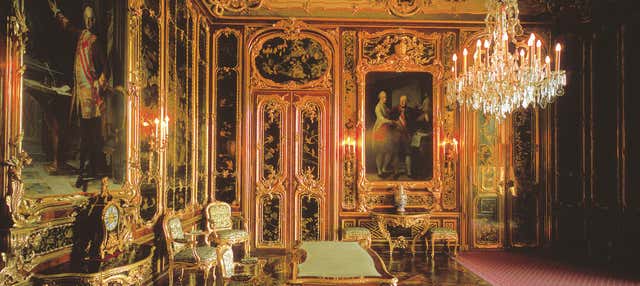
Schönbrunn Palace Tour
Login to add activities to your favorites and access them from any device
This site is reCAPTCHA protected and Google's privacy policy and terms of service apply.
Basic information regarding personal data protection
Person responsible for the processing: CIVITATIS TOURS, S.L. (CIVITATIS). Purpose: Provision of the services requested; Sending commercial communications about CIVITATIS products and services, for which commercial profiles of our customers may be drawn up; Sending surveys in order to assess the services offered and their degree of satisfaction, as well as the publication of opinions about the service received; Compliance with accounting, legal, fiscal and administrative obligations; Publication of customer images and processing of data for statistical purposes. Rights: You have the right to access, rectify and delete data, to limit its processing, to oppose its processing and to its portability. Additional Information: You can consult additional information on Data Protection in the General Terms and Conditions .
Log in to rate the opinions of other travelers

Want to share your culture with travelers from all the world?
Where are you traveling to.
- Destinations
- Tours in Vienna
Free Evening Walking Tour Vienna
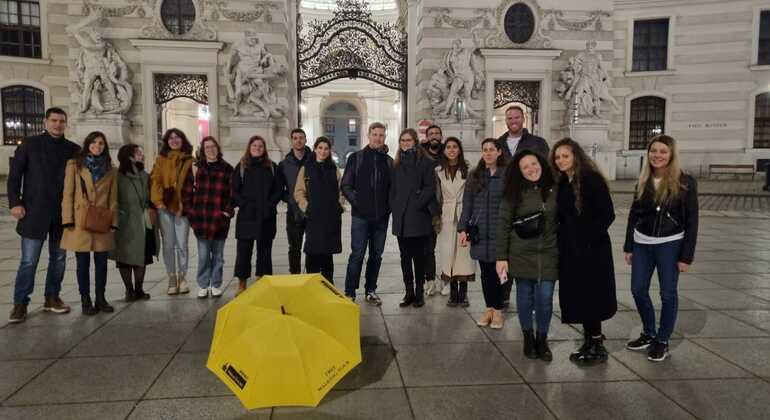
Overview of the tour in Vienna
Experience the great history and modern day Vienna at the same time. The tour covers famous Viennese attractions, the most influential historical sights and delves into stories of past wars, triumphs and tragedies. Meet other travelers and discover Vienna’s history, from its vast musical influences, through the dark Nazi era and its beginnings as a Celtic and roman settlement. If you are looking for Prime Walking Tours in Vienna - we offer more than sightseeing, and we want to share this, be different, and connect great guides with smart travelers. There’s nothing like strolling around through the streets of Vienna during the evening hours: beautiful sunsets in the spring time, chillier hours in the hot summer months, bright illuminations during the colder season... and at the end of the tour you can easily go for dinner or a drink in one of the numerous restaurants and bars in the city centre and just enjoy life! We'd be pleased to recommend you the best spots in town!
This activity includes:
- The Hofburg
- State Opera Alley Lodge
- Spanish Riding School
- St. Stephen's Cathedral
- local recommendations
- licensed guides
Meeting point
Helmut Zilk Square, next to the Vienna Tourist Office
MEETING POINT: Helmut Zilk-Platz (on the square next to the Memorial against war and fascism) 1010, Vienna —> best to get out at the metro station „Karlsplatz“ (U1,U2,U4) WATCH OUT FOR THE GUIDE WITH A YELLOW UMBRELLA by PRIME TOURS
Things to note
Booking for this tour is recommended to reserve your space specially during high season. This helps us to guarantee you'll receive a top quality tour! Punctuality is a must! Better to be there 5 min before departure. WATCH OUT FOR THE GUIDE WITH A YELLOW UMBRELLA by PRIME TOURS.
Free Cancellation
You are free to cancel a booking anytime. We kindly remind you to cancel bookings you cannot arrive for. Being reported as absent decreases your customer level points and the benefits you can enjoy.

- Join Freetour
- Provider Sign In
- Affiliate Program
- Security & Privacy
- Terms & Legal
- Cookie policy
- Freetour Awards
- Ratings & Reviews powered by
Free Walking Tour Vienna
Our top picks for your perfect tour experience in Vienna
St. Stephens Cathedral
State Opera House
World War 2
Imperial Palace
Spanish Riding School
The hippest free walk in town. We show you the best sights of Vienna within two hours. Explore the old town of this marvelous city with our young, fun and motivated licensed guides. Listen to fun facts and experience hidden gems and much more!
EN: Daily at 11am, 03pm & 06pm
DE: Do - So um 11:30
ES: Todos los dias: 11:30, varias dias: 16:30 y 19:00
Meeting Point
Helmut Zilk Platz, 1010 Vienna (In front of the tourist info, metro station "Karlsplatz" U1, U2, U4)
Google Maps
Open location in Google Maps
Free Evening Tour Vienna
Alternative tour.
Night Walking Tour
Romantic vibes
For night owls
The different free tour
Discover Vienna at night and see it from a different perspective. Listen to local stories, explore hidden gems and experience completely different vibes than during the day. You only know Vienna if you have seen it at night!
Wed - Sun at 06pm
Craft Beer Tasting Vienna
Austrian Beers
Brewing Insights
Craft Beer Expert Guide
Fresh snacks
Austria offers a huge variety of different types of beer. During this tasting you will not only learn insights about the brewing process but also the proper way of tasting the different beers. We also include assorted food bites to enrich the taste of the beers.
Fri & Sat at 7pm
Kaltenhauser Botschaft, Mariahilfer Straße 156/158, 1150 Wien
- Vienna Travel Planning
- Vienna Notes Newsletter
- Help Centre: Ask a Question
Vienna Unwrapped Inspiration and Planning For Independent Travellers who are visiting Vienna
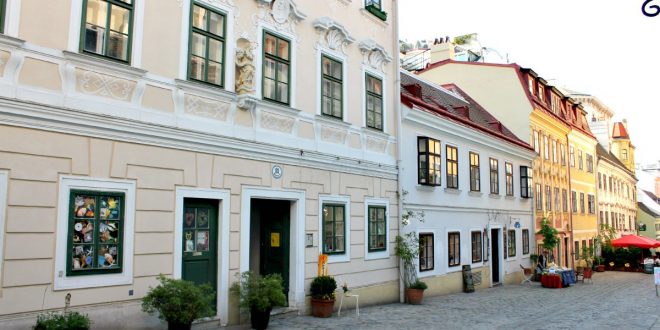
Vienna Walks – Six Exciting Sightseeing Routes With Maps
- share
- save
- RSS feed
[todaysdate format=”F Y”] Which Vienna walks will best roll out the city to you? First, almost all major Vienna landmarks and attractions line up within the three square kilometres of Old Vienna, a UNESCO World Heritage site. Second, not just the city centre lends itself to walks but also many central neighborhoods.
Walking through the likes of Wieden, Mariahilf and Josefstadt with their typical townhouses and shops will give you a good insight into local urban lifestyles. To help you plan your time in Wien I have pulled together my favourite Vienna walks which are also mapped out.
Is Vienna a walkable city?
As soon as you enter central Vienna you will notice its well-designed urban layout with wide pedestrian-friendly sidewalks, well-maintained streets, and numerous pedestrian zones. As one of Europe’s greenest metropolises more than half of Vienna’s city (53 percent) is green space. In a few parts of the city, designated pedestrian zones hand over the city entirely to walkers. Beyond the city center, many local neighborhoods such as Josefstadt or Mariahilf are pedestrian-friendly, with low traffice zones, shops, restaurants, and cultural attractions within walking distance. The sidewalks in Vienna are generally well-maintained and accessible, making it comfortable for pedestrians.
Interestingly, more than three quarters of local Viennese walk for more than 10 minutes every day (source: Mobilitätsagentur Wien, 2019). And more than 30 per cent of errands are done on foot.
Old Vienna Walk
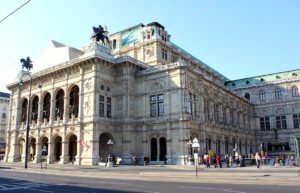
This walk combines sightseeing of Vienna landmarks , such as the Vienna Opera House, the Albertina and the Stephansdom, with my tips for Vienna coffeehouses and traditional snack bars, and the occasional must see shops that will cross your way. Go to Old Vienna Walk .
Vienna 1900 Walks
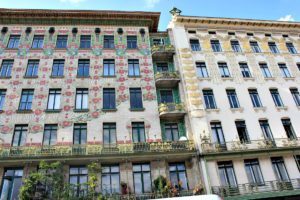
Unfortunately for travellers Wien’s fin-de-siècle highlights lie scattered across town. There is no ‘Vienna 1900’ quarter nor are there street signs to help you trace the most exciting and fruitful era of Viennese art and literature.
Hence I have cut, trimmed and aligned my experience of the best places to explore Vienna at the start of the 20th century. The result are two neat day itineraries of museum, coffeehouse and bar visits, street walks, a shopping tour and tips on concerts with music from that era. Get inspired by these Vienna 1900 walks.
To acquire a 360-degree understanding of the era, read my compact one pager about Fin-de-Siècle Vienna before your walk.
Vienna By Night
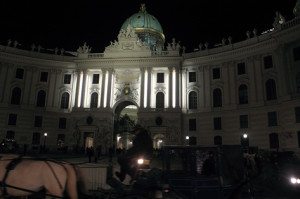
Once you arrive in Vienna, even if it’s later in the evening, don’t think it’s too late to explore the city. In fact, it’s the most brilliant time. Streets, squares, architecture, sculptures and monuments have that magical glow that you will rarely find during the day. If you are a photo enthusiast like me you will find it’s the best time to capture the city’s architecture. I am sharing this Vienna night walk with you for inspiration. Find out more Vienna by night .
Art Nouveau Walk
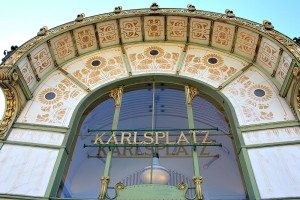
Vienna Insider Walk
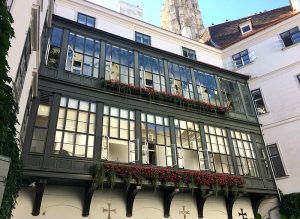
Find out more in Vienna Insider Walk .
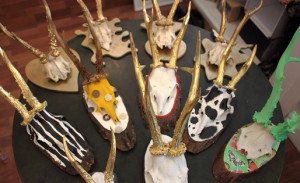
Especially if you have a hang for interior design, art, fashion , music, architecture, multimedia design, advertising or marketing, you will feel at home during this Art and Design Walk. It is a very relaxed mixture of museums, art crowd cafés and artisan shops. You can easily scale it up or down, depending on the amount of time you would like to spend in one place. Visit Art Walk .
Guided Vienna Walks
If you want to add intellectual depth – and fun – to your walk, consider hiring a great licensed guide: All trained guides know the city center like the back of their hand, and will share many exciting stories. Besides, you could also join one of the regular small group tours. As for neighborhood walks, a few guides also cover out-of-centre areas like the ‘art walk district’ Neubau, Wieden and Alsergrund. And some of these guides will even let you fill your shopping bags, like this award-winning shopping guide . To visit the former Jewish quarter Leopoldstadt and Path of Remembrance make sure you hire a specialised Jewish Vienna tour guide.
Learn more about guided Vienna tours and private tours .
Other Ideas For Self-Guided Tours In Vienna
Other than walking to explore Vienna, there are two further ideal means to roam the city just like a local: Either use one or more of Vienna’s 28 tramway lines, or rent a bike. In Vienna Tours, Self-Guided find inspiration for the best tramway lines and bike rental options to discover Wien.
explore more of What To Do In Vienna back to Vienna Unwrapped homepage
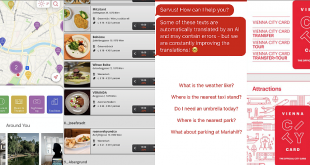
Resources You Need To Plan Your Vienna Vacation
To fast track your planning for a Vienna vacation I have packed a ton of …
A night walking tour in Vienna – Travel Photo Mondays
by Noel | | Ancient and historic sites , Architecture , Austria , Historic sites , Travel Photo Mondays , Travel Photography , Urban travel | 31 comments

A night walking tour in Vienna: Must visit spots in the inner ring and around the city (updated 2023)
How to get around vienna at nighttime.
Getting around Vienna city is convenient and efficient, thanks to its excellent public transportation system and other transport options. Here’s how to navigate the city:
Vienna U-Bahn (Subway): The Vienna U-Bahn is a fast and reliable underground subway system with several lines covering key areas of the city. It’s a convenient option for traveling between major landmarks, attractions, and neighborhoods.
Vienna S-Bahn (Urban Rail): The S-Bahn complements the U-Bahn, offering additional connections to suburban areas and nearby cities. It’s an excellent choice for day trips or reaching destinations outside the city center.
Trams: Vienna’s tram network is extensive and provides a scenic way to explore the city. Trams are especially useful for reaching places not directly served by the subway.
Buses: Buses in Vienna cover areas not accessible by trams or the subway. They are an alternative option for getting around, and some routes operate 24 hours a day.
City Bikes: Vienna offers a bike-sharing system known as Citybike Wien. Visitors can easily rent bicycles at various stations throughout the city and return them after use. It’s an eco-friendly and enjoyable way to explore Vienna.
Taxis: Taxis are readily available throughout the city. They can be hailed on the street or found at designated taxi stands. Ride-hailing apps are also popular in Vienna.
Walking: Vienna is a pedestrian-friendly city with many attractions within walking distance of each other. Exploring on foot allows you to discover charming side streets, parks, and hidden gems.
Car Rental: While public transportation is efficient, some travelers may prefer renting a car for day trips to nearby areas or if their itinerary requires more flexibility.
To use public transportation, consider purchasing a Vienna Card, which offers unlimited travel on the city’s public transport network for a specified period, along with discounts on various attractions. Overall, getting around Vienna is easy, making it enjoyable to explore the rich history, culture, and beauty of this magnificent city.
Some favorite attractions of Vienna at night time
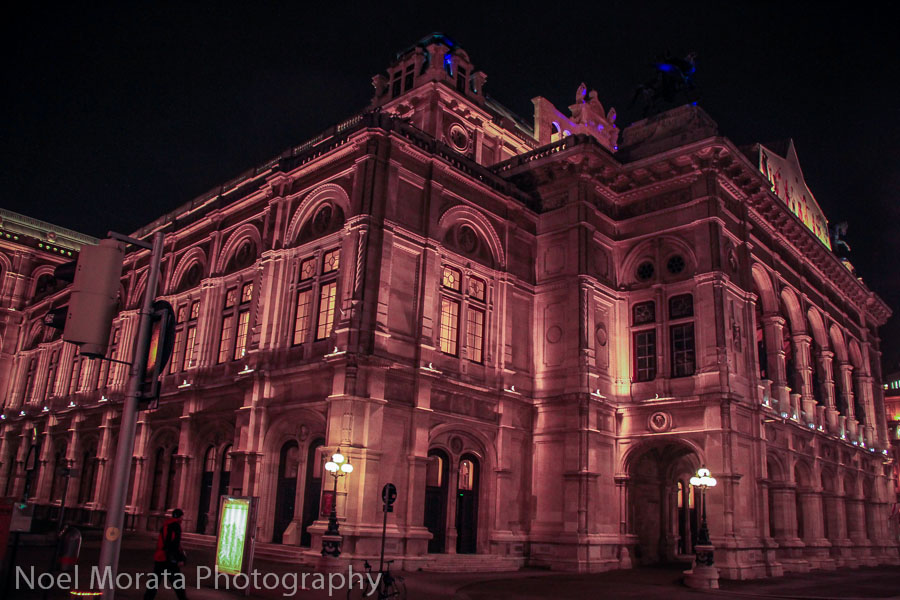
Vienna Opera House
Vienna Opera house at night
The Vienna State Opera House, often referred to simply as the Vienna Opera House, is a world-renowned cultural landmark located in the heart of Vienna, Austria. This majestic building, designed in the Neo-Renaissance style, showcases a grand façade adorned with statues and sculptures.
Inside, visitors are captivated by its opulent interiors, including a lavishly decorated auditorium and majestic chandeliers. The Vienna Opera House is celebrated for its outstanding acoustics, making it one of the finest opera venues in the world.
As the centerpiece of Vienna’s vibrant musical scene, the opera house hosts a diverse repertoire of opera, ballet, and classical performances throughout the year. It is home to the Vienna State Opera and the Vienna Philharmonic Orchestra, drawing music enthusiasts from around the globe.
The Vienna Opera House’s rich history and exceptional artistic productions make it a must-visit destination for culture seekers, offering an unforgettable experience at the heart of Vienna’s artistic heritage.
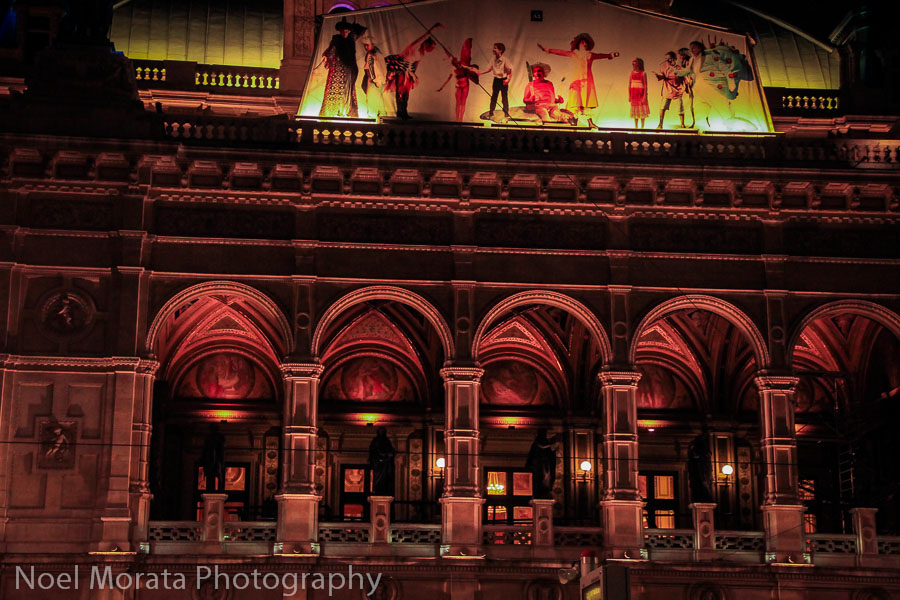
Vienna opera house front facade

St. Stephen’s Cathedral in Vienna
St. Stephen’s Cathedral
St. Stephen’s Cathedral, also known as Stephansdom, is a stunning masterpiece of Gothic architecture located in the heart of Vienna, Austria. With its distinctive multi-colored tile roof and soaring spire, the cathedral is an iconic symbol of the city.
Inside, visitors can marvel at the grandeur of its ornate interior, including intricate stained glass windows, beautiful altars, and impressive sculptures. The cathedral’s catacombs hold the remains of former Habsburg rulers and notable figures.
As a significant religious and cultural landmark, St. Stephen’s Cathedral attracts both tourists and worshippers alike. Climbing the South Tower offers panoramic views of Vienna’s cityscape, providing a breathtaking reward for those who venture to the top.
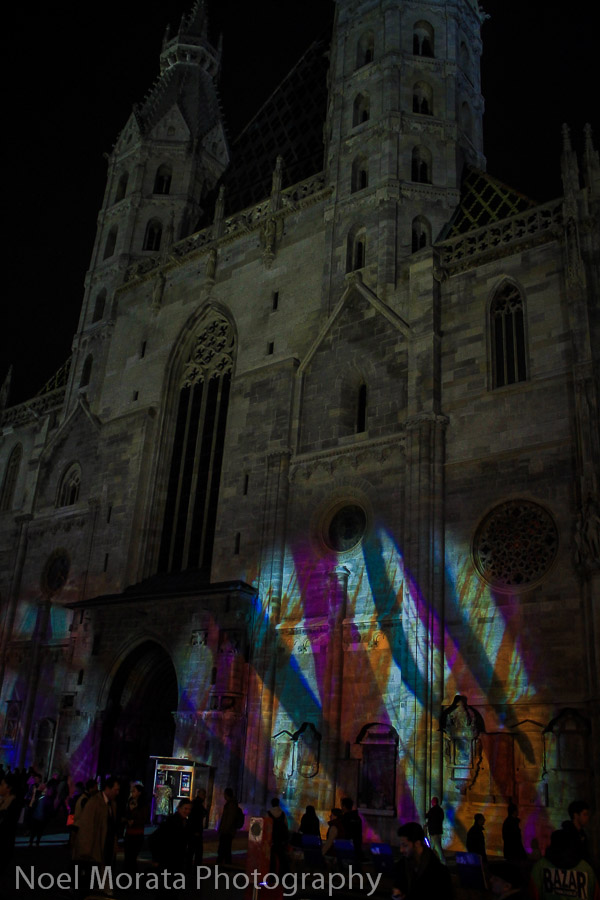
Colorful lights at St. Stephen’s Cathedral in Vienna
Interior details of the Cathedral
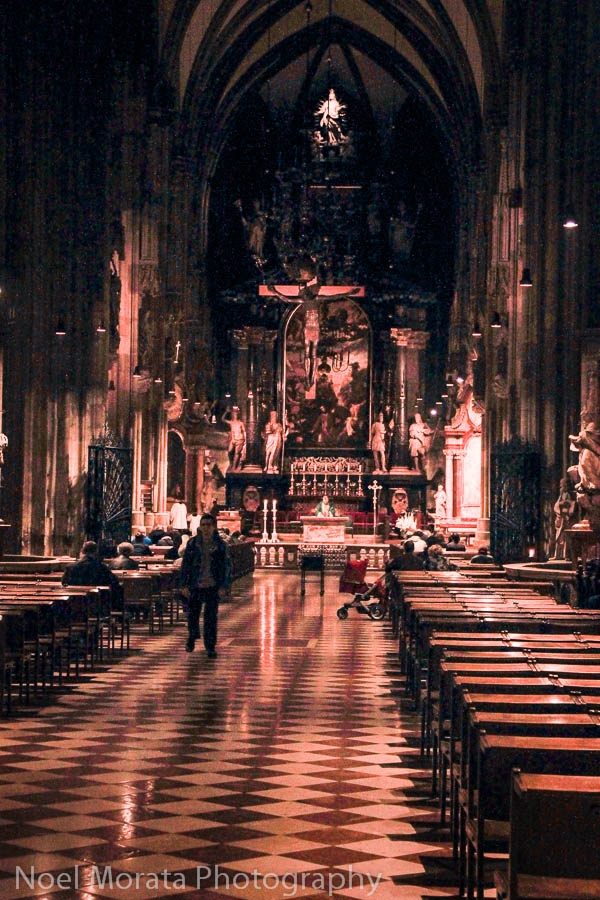
Interior of St. Stephen’s Cathedral in Vienna
Along the pedestrian zones in the Stephansdom’s area, it is very busy and lively with open air cafes, lit up buildings, shops and landmarks all open for the night visitor. It’s quite pleasant strolling through Stephansdoms and walking back to the cathedral which is relatively close by. Beautiful architecture line many of the pedestrian zones with the bottom floors containing specialty retailers, galleries and regional brands. From the Ringstrasse by the Opera house, you can easily walk through the pedestrian zones all the way to the Danube river and back. It’s seems to be a very popular pass-time checking out all the shops, looking at the dining venues on the promenade or just finding a nice spot to enjoy a Viennese pastry and enjoy some people watching.
Stephansdom’s plaza
Stephansplatz, the plaza of Stephansdom (St. Stephen’s Cathedral), is the vibrant heart of Vienna’s city center. Located in the Innere Stadt (First District), it is one of the most iconic and bustling squares in the city. The plaza is dominated by the awe-inspiring St. Stephen’s Cathedral, an impressive Gothic masterpiece with its striking multi-colored roof and towering spire.
Stephansplatz is a popular meeting point for both locals and tourists, offering a lively atmosphere with numerous cafes, shops, and street performers. Visitors can admire the architectural beauty of the cathedral, take a leisurely stroll, or enjoy people-watching in this vibrant hub of Vienna’s cultural and historical heritage. The square is also well-connected to various attractions, making it an ideal starting point for exploring the rich history and charm of the Austrian capital.
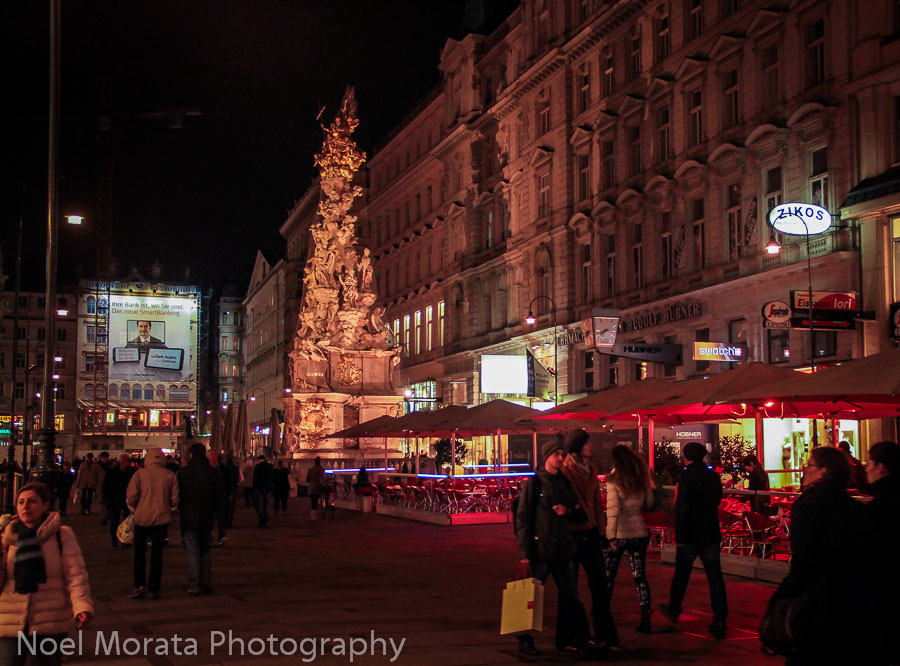
Pedestrian zone in Stephansdom’s plaza
Popular shopping venues in Vienna
The Ringstrasse of Vienna, known as the Ring Road, encircles the historic city center and is home to various shopping venues catering to diverse tastes and interests. Here are some of the shopping highlights around the Ringstrasse:
Kärntner Strasse: Located near the Vienna State Opera, Kärntner Strasse is a bustling shopping street lined with boutiques, high-end fashion stores, and international brands. It’s a popular destination for fashion enthusiasts and offers a wide range of shopping options.
Graben: Just off Kärntner Strasse, Graben is a vibrant pedestrian street featuring upscale shops, including luxury fashion brands, jewelry stores, and designer boutiques. It’s an elegant shopping district with a historical charm.
Kohlmarkt: Parallel to Graben, Kohlmarkt is another luxury shopping street in Vienna. It is renowned for its high-end jewelry stores, luxury accessories, and exclusive fashion labels.
Tuchlauben: Situated close to Kohlmarkt, Tuchlauben is a street known for its fashionable boutiques and avant-garde designer stores. It’s a hotspot for contemporary fashion and cutting-edge trends.
Mariahilfer Strasse: Not far from the Ringstrasse, Mariahilfer Strasse is Vienna’s longest shopping street and offers an extensive array of shops, department stores, and international brands, making it a favorite destination for both locals and tourists.
Opernpassage: Located beneath the Vienna State Opera, Opernpassage is an underground shopping arcade with various shops, cafes, and restaurants, providing a unique shopping experience in an architecturally impressive setting.
Ringstrassen Galerien: Situated right on the Ringstrasse, the Ringstrassen Galerien is a modern shopping mall with a mix of international and Austrian brands, as well as restaurants and cafes.
These shopping venues around the Ringstrasse cater to different preferences, from luxury fashion to contemporary styles, making it a delightful shopping experience for visitors exploring the heart of Vienna.
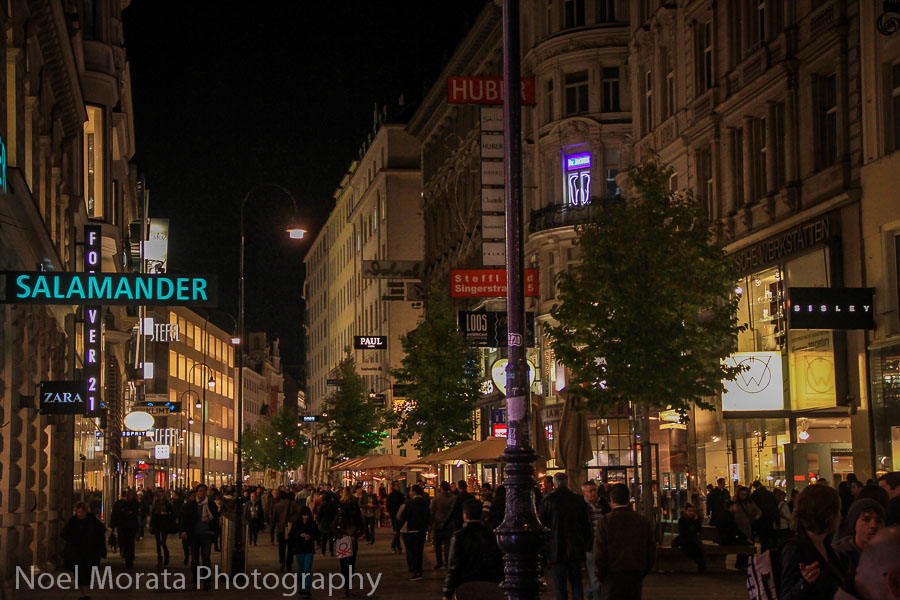
Main pedestrian zone around the Cathedral of Vienna
Popular food venues to eat around the Ringstrasse
Around the Ringstrasse in Vienna, you’ll find an array of popular food venues offering diverse culinary experiences. Here are some must-visit spots to savor delicious meals:
Café Central: A historic café located near the Ringstrasse, Café Central exudes elegance and charm. It’s renowned for its Viennese coffee culture, delightful pastries, and traditional Austrian dishes.
Figlmüller: This famous restaurant is a go-to place for experiencing the iconic Viennese schnitzel, a breaded and fried veal cutlet. Figlmüller’s schnitzels are known for their size and delicious flavor.
Naschmarkt: Situated just a short walk from the Ringstrasse, Naschmarkt is Vienna’s largest outdoor market. It offers an array of international cuisine, including Mediterranean, Middle Eastern, and Asian delicacies.
Plachutta: For those craving traditional Viennese cuisine, Plachutta is a top choice. It’s renowned for its hearty dishes like tafelspitz (boiled beef) and other Austrian specialties.
Griechenbeisl: With a history dating back to the 15th century, Griechenbeisl is one of Vienna’s oldest restaurants. It serves classic Austrian and Viennese dishes in a charming and historical setting.
Café Sacher: Home to the world-famous Sachertorte, Café Sacher is a must-visit for dessert lovers. Indulge in the original Sachertorte, a delectable chocolate cake with apricot jam.
Trzesniewski: This traditional sandwich shop offers an assortment of open-faced sandwiches with various toppings, perfect for a quick and delicious snack.
Hawelka: Another iconic café, Hawelka, is beloved for its bohemian atmosphere and Viennese coffeehouse culture. Enjoy traditional desserts like the Buchteln (sweet rolls) and the Apfelstrudel (apple strudel).
These popular food venues around the Ringstrasse in Vienna provide a delightful culinary journey, introducing visitors to the rich flavors of Austrian cuisine and the city’s cherished café culture. Whether it’s a classic Wiener schnitzel or a slice of Sachertorte, these venues offer an unforgettable dining experience in the heart of Vienna.
Here’s a night-time walking tour of the main pedestrian zone of Vienna below
Carriage rides around the Ringstrasse
Carriage rides are very popular and plentiful around the historic center of Vienna. They typically ride along the 19th century Ringstrasse filled with architectural buildings, parks, monuments and baroque inspired masterpieces that are well lit and wonderful to view by taking a nice, slow carriage ride through the district.
These elegant carriages, drawn by well-groomed horses, take passengers on leisurely rides through Vienna’s iconic sights, such as the imperial palaces, grand boulevards, and scenic parks.
The experience exudes a romantic ambiance, reminiscent of a bygone era, as visitors take in the beauty of Vienna from a unique vantage point. The clip-clop of hooves and the gentle sway of the carriage add to the enchantment, making it an unforgettable and picturesque journey through the heart of this magnificent city. Horse carriage rides provide a delightful way to immerse yourself in Vienna’s rich history and regal heritage.
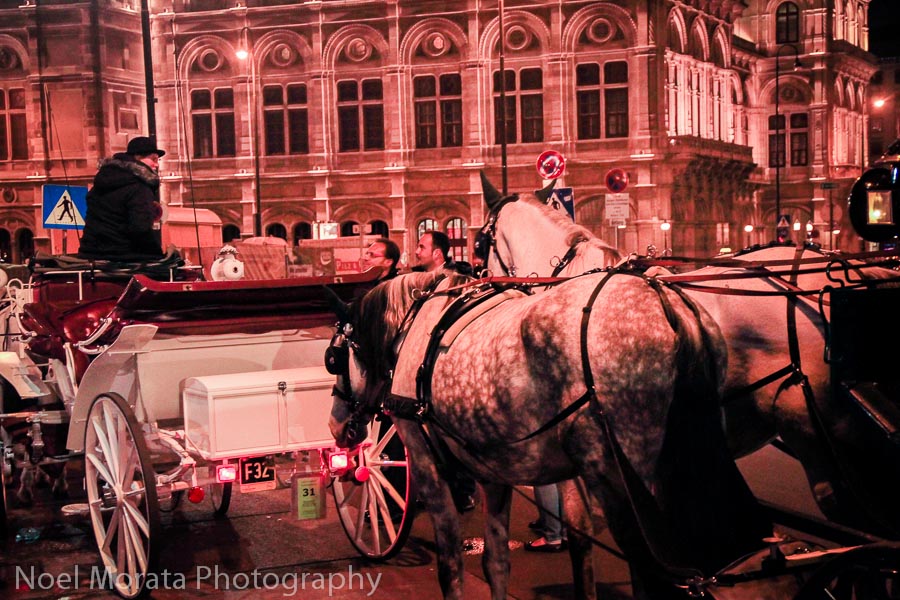
Carriage horse rides along the ring in Vienna
Check out this virtual carriage around Vienna at night
Weather and the best time to visit Vienna
Vienna experiences four distinct seasons, each offering a different experience for travelers. The best time to visit depends on your preferences and the type of weather you enjoy.
Spring (March to May): Spring is a delightful time to visit Vienna as the city blossoms with colorful flowers and trees. The weather starts to warm up, and temperatures range from 10°C to 20°C (50°F to 68°F). It’s an ideal time for sightseeing, exploring outdoor attractions, and enjoying the many parks and gardens in full bloom.
Summer (June to August): Summer in Vienna is warm, with temperatures often reaching 25°C to 30°C (77°F to 86°F) and occasional heatwaves. This season attracts many tourists, and you can enjoy various outdoor festivals and events. However, be prepared for occasional rain showers and crowded tourist spots.
Autumn (September to November): Autumn in Vienna is a beautiful season, with mild temperatures ranging from 10°C to 20°C (50°F to 68°F). The city’s parks and gardens display vibrant autumn foliage, creating picturesque scenery. It’s a great time to visit if you prefer milder weather and fewer crowds.
Winter (December to February): Winter in Vienna is cold, with temperatures ranging from -1°C to 5°C (30°F to 41°F). The city transforms into a winter wonderland, with festive decorations and Christmas markets. If you enjoy the holiday season, Vienna offers a magical atmosphere, but be prepared for chilly weather.
In summary, the best time to visit Vienna depends on your interests and weather preferences. Many tourists prefer spring and autumn for their pleasant weather and charming scenery. Summer is bustling with events and activities, but it can be crowded. Winter is perfect for experiencing the city’s holiday spirit and cultural offerings, although it can get quite cold. No matter the season, Vienna’s rich history, cultural heritage, and grand architecture make it a captivating destination to explore year-round.
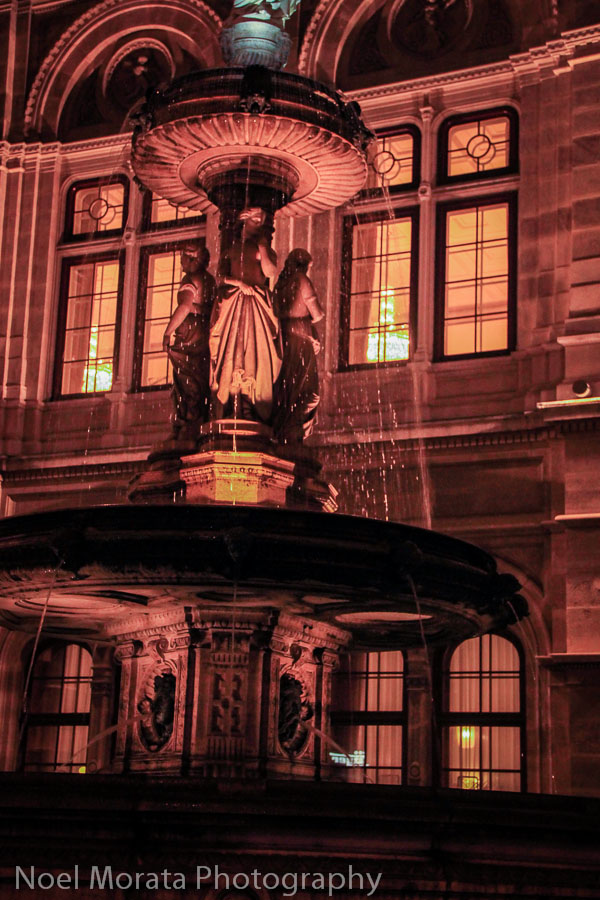
Lit fountain next to the Opera House of Vienna

Night Clubs and other fun venues around Vienna
Around the Ringstrasse in Vienna, you’ll find a vibrant nightlife scene with popular clubs and night venues that cater to various tastes and preferences. Here are some well-known spots for a night of entertainment:
Flex: Located along the Danube Canal, Flex is an iconic nightclub known for its diverse music offerings, ranging from electronic dance music to live concerts. It’s a favorite among locals and visitors alike.
Volksgarten: Situated near the Ringstrasse, Volksgarten is a historical venue that combines a stylish outdoor garden with indoor dance floors. It hosts various themed parties and DJ nights.
Albertina Passage: Tucked beneath the Albertina Museum, Albertina Passage offers an elegant and sophisticated nightlife experience. It’s a chic venue with live music, DJs, and a vibrant atmosphere.
Praterdome: Located in the Prater amusement park, Praterdome is one of the largest nightclubs in Vienna. It boasts multiple dance floors, each playing different music genres, ensuring a fun-filled night.
Roxy Club: A popular LGBTQ+ club, Roxy offers a lively and inclusive environment with diverse music and themed parties.
Motto am Fluss: Positioned along the Danube Canal, Motto am Fluss is a trendy bar and restaurant with a scenic terrace. It’s perfect for a relaxed evening of cocktails and socializing.
Babenberger Passage: This stylish venue near the Ringstrasse combines a restaurant, lounge, and club experience. It’s an excellent choice for a chic and upscale night out.
Celeste: Celeste is a renowned venue for art, music, and nightlife, offering a unique and creative atmosphere for clubbers and music enthusiasts.
These popular clubs and night venues around the Ringstrasse in Vienna ensure that your nights are filled with excitement and entertainment. Whether you’re into electronic music, live concerts, or simply enjoying drinks with friends, Vienna’s nightlife has something to offer everyone.
More inside tips to exploring Vienna at night
If you are planning on visiting Vienna, night time is a great time to visit the inner ring and attractions in the area. Here are some inside tips for your nocturnal adventure:
1. **Stroll the Danube Canal**: Take a leisurely walk along the Danube Canal, where you’ll find illuminated bars, art installations, and a vibrant atmosphere.
2. **Late-Night Coffee Houses**: Visit traditional Viennese coffee houses that stay open late. Try Café Hawelka or Café Central for a cozy experience.
3. **Vienna’s Heurigen**: Experience local wine culture at Heurigen (wine taverns) in the suburbs. Enjoy wine, traditional food, and live music.
4. **Naschmarkt at Night**: Explore Naschmarkt after dark, when it transforms into a trendy hotspot with restaurants and bars offering international cuisines.
5. **Schönbrunn Palace Illumination**: While the palace itself closes early, the gardens are beautifully illuminated at night. It’s a romantic setting for an evening stroll.
6. **Hidden Courtyards**: Seek out hidden courtyards in the city center, like the Ferstel Passage, for a glimpse of Vienna’s architectural charm.
7. **Prater Park**: Visit Prater Park after dark for a unique atmosphere. The iconic Ferris wheel is beautifully lit, and there are late-night attractions.
8. **Viennese Music Clubs**: Enjoy live classical music or jazz performances at intimate venues like Porgy & Bess or the Vienna State Opera.
9. **Würstelstands**: Try late-night snacks at the famous Würstelstands (sausage stands) scattered around the city.
10. **Night Photography**: Vienna’s architecture and landmarks are stunning at night. Bring your camera for some captivating nighttime photography.
11. **Vienna Woods**: Take a night hike or nature walk in the Vienna Woods (Wienerwald) for a serene escape from the urban bustle.
12. **Visit Local Bars**: Explore Viennese nightlife by visiting local bars and pubs that often host live music or DJs.
13. **Summer Open-Air Cinema**: In summer, enjoy outdoor movie screenings in unique locations like the Vienna Film Festival at Rathausplatz.
14. **Graffiti Art Tour**: Discover Vienna’s vibrant street art scene by embarking on a graffiti art tour in the city’s artistic districts.
15. **Late-Night Shopping**: Some boutiques and shops in the city center stay open late, perfect for souvenir hunting.
Exploring Vienna at night offers a chance to see the city’s hidden gems and experience its vibrant nightlife. Whether you’re into cultural pursuits or simply want to savor the city’s ambiance, there’s plenty to enjoy beyond the main attractions after dark.
Final Thoughts
On a pleasant evening, it’s fun to explore Vienna at night time , especially in the historic center district inside of the Ringstrasse. There are so many beautiful landmarks, monuments and night life to enjoy in this Cultural capital of Austria and taking the time to see them at night time is quite special, don’t you think?
Check out this night walking tour of the main attractions of Vienna at night
Other must reads for Vienna
If you are exploring Vienna, check out these other posts for inspiration to visiting the city.
10 things you should be doing in Vienna
A visit to the Kunsthistoriches Museum
A fall garden tour at Schonbrunn
Belvedere palace at twilight
Royal Imperial collections of the Hapsburgs
Also, check out some of my other favorite night tours of cities around the world below
Touring Krakow at night
Bologna at night
Touring Budapest at night
Las Vegas night scenes
Neon light tour in Las Vegas
Discovering London at night
Visiting Lyon at night
Conclusion to a night walking tour in Vienna
In conclusion, a night walking tour in Vienna unlocks a world of enchantment and allure that is best experienced after dark. As the sun sets, the city comes alive with a magical ambiance, casting a captivating glow on its historic landmarks, grand palaces, and charming streets. Embarking on this nocturnal adventure offers a unique perspective, revealing hidden corners and secret stories that are often overlooked during the day. From the illuminated Vienna State Opera to the twinkling lights along the Ringstrasse, each sight becomes a mesmerizing spectacle under the night sky. Immerse yourself in Vienna’s rich history, culture, and romance on a night walking tour that promises unforgettable memories and a deeper connection to this elegant city.
Thanks for taking this night walking tour in Vienna for Travel Photo Mondays.
Hope that this post has been helpful to planning your visit Vienna at night and if so, please do share it with any of the social media channels and buttons located below.
Disclosure – some of the links above are to affiliate sites that are either reviews or recommendations if you book helps to keep our site running at no additional cost to you. We appreciate your supporting our website meanwhile.
Sharing is caring!
31 Comments
I’ve not had much luck with night time photography Noel, but your walking tour of Vienna has inspired me to give it a try. The image of St. Stephens Cathedral especially caught my eye. Thanks!
Vienna is so beautiful, even at night!
St. Stephen’s Cathedral in Vienna looks absolutely incredible. Those are some gorgeous night photos. When I travel alone I rarely go out at night so a group walking tour would be ideal. Thanks for the idea.
Good pics Noel. Looking forward to go on a “photography-trip” with you sometime. Cheers, Jempi
Nighttime adds a touch of magic to any location, doesn’t it, Noel? These are most inviting and make me want to pack my bags and set out for Vienna!
Beautiful photos, Vienna looks so magical and grandiose
It looks fabulous, Noel. Quite the place to be for a Christmas Fair! (I know! Much too early to think Christmas)
Vienna is so cool, even better after dark! Great shots.
Steady as she goes is right! Getting these without a tripod makes you a much steadier hand than I!
Love your night shots, Noel. You must have a steady hand. St Stephen’s cathedral looks so spooky and ethereal. Didn’t spend enough time in Vienna, so thanks for taking me back for a joy ride today.
I’m impressed with your night photos of Vienna. Beautiful! I find it so difficult to take photo at night and know I should really carry a tripod and not try to use my husband’s head to steady the camera. Will give it a try on my next trip to Europe.
Beautiful night shots Noel! I’ve always wanted to visit Vienna… the architecture is simply stunning.
We haven’t mastered the art of night photography with our little point and shoot cameras yet but you’ve inspired me to at least TRY! I love the reflection of the lights and the amazing architecture shown in your Vienna photos. Now I can see why it has such a reputation as a romantic city.
I love citys at night. Great pictures!!
So wonderful to see some night shots – There’s a big gap in my images always between 6pm and 6am!!
Noel, I love night shots. Did you set up your tripod for all these shots? I think the cathedral with the lights is pretty cool.
I didn’t bring a tripod on this trip, just held very, very steady!
The times we were in Wien our kids were small, so (since we’re European) we didn’t go out at night. The lights give it a festive atmosphere, while during the day it appears more regal (in my opinion). A perfect city for someone loves cultural activities and sights:)
Great photos 🙂
Your photos really transported me there. Vienna seems so romantic at night. I like how they’ve lit up the buildings, especially all the colors on St. Stephen’s Cathedral. I think a carriage ride followed by pastries at sidewalk cafe would be the perfect way to round out the evening.
As always wonderful photos. Vienna at night looks fab!
When we visited Vienna, it was cold and wet, so in the evenings everything glittered and shimmered. Your photos brought back how enjoyable our impressions were.
I love night time photo essays as it gives a whole other dimension to the feel of a city and I think it adds a lot of drama. Did you carry around a tripod?
It was all hand held at the lowest shutter speed when I travel light I cannot bring a tripod, so it really is hit or miss for me
Hi Noel, My favourite of your nighttime photographs is “Main pedestrian zone around the Cathedral of Vienna” because it looks so real I want to step into it. It looks like a vibrant area that I would love to explore.
We were just in Vienna—-really—like 10 days ago. It is beautiful at night. My photography?—-not so much, so I’m happy to see your photos. Also, when we were there St. Stephen’s Cathedral was largely covered in scaffolding, so we only had a glimpse of the spectacular roof.
Just back from Boston and you have whisked me away to Vienna 🙂
The Vienna opera house looks so stunning at night. Loved the architecture of the place.
I’m really enjoying your posts about Vienna!
Wow, these are amazing night shots Vienna, Noel. I love the vibes and the colors of each scene and they seem so alive It has been a long time since I was in Vienna. I remember enjoying the lovely Viennese evenings. I’m inspired to revisit the city soon.
Noel, it has been a while since I visited Vienna and I must admit that I mostly explored this grand city during the daytime. But I remember that my favorite area at night was the Rathausplatz and the beautifully it up Rathaus with its five slender towers. But in any case, a stroll around Vienna certainly seems rewarding at any time of day or night… 🙂
Trackbacks/Pingbacks
- Vienna Highlights: A Fall Garden Tour At Schonbrunn | - […] Touring Vienna at night time […]
- Rebuilding Los Cabos: Odile relief funds - More Time to Travel - […] This post is part of a LinkUp to Noel Morata’s Travel Photo Discovery. […]
- Walking On Top of the World in Marseille | Travel with Intent - […] Also linked to Scenic Weekends and Travel Photo Monday. […]
- The National Snack of Spain - Churros y Chocolate » Reflections Enroute - […] This post is linked to Travel Photo Thursdays and Travel Photo Mondays. […]
- Florence At Leisure | Traveling Solemates - […] Linking to Travel Photo Thursday and Travel Photo Discovery. […]
Submit a Comment Cancel reply
Your email address will not be published. Required fields are marked *
This site uses Akismet to reduce spam. Learn how your comment data is processed .
Hi, I'm Noel, a writer and photographer based in San Francisco and Hawaii. I write about delicious food and wine indulgences, thoughtful luxury, and adventure travel. I share camera tips and techniques while exploring new and unusual places around the world. My site explores culture and history, art and architecture, world heritage sites, exotic locals, along with nature tours and natural landscapes worldwide. Quite a mixed bag of curiosities and quirky interests, just like myself.
Posts by category

Austria > Vienna > Free Vienna Walking Tour
Top 10 Vienna Tips | Suggested Itineraries For Vienna
- Top 10 Things To Do
- Old Town Walking Tour
- Ring Tram Tour
- Schönbrunn Palace
- More Sights
- Best Day Trips
- Helfpful Visitor Tips
- Suggested Itineraries

Old Town Vienna Walking Tour:
Location : Vienna’s Historic City Center Cost : Free, Self-Guided ( Museum and sight costs below ) Style : Do-It-Yourself Walking Tour ( Self Guided ) Start : State Opera House ( Karlsplatz Metro stop ) End : Museum Quarter ( Volkstheater Metro stop ) Walking Distance : 2.5 miles Time : 90 minutes for walk ( with sights 4-5 hours ) Fun Scale : 9.5 out of 10
The heart and soul of Vienna ( Wien ) is by far its beautiful Old Town which is filled with historic sights. Modern buildings mix in with tons of Medieval and Renaissance elements, making the city center quite magical. From cathedrals to beer gardens, and shopping to museums, there is diversity to entertain all travelers. Maybe the best thing about our free Vienna walking tour is that most of Old Town is very compact and easily seen on foot. Because the city center is so easy to walk, we created this free do-it-yourself Vienna walking tour map for you to follow which covers all the best stops with some insider tips. Enjoy our free Old Town Vienna walking tour!
History Of Old Town Vienna:
Settlement of Old Town Vienna began with Celtic tribes in 500BC with a riverfront camp called Castrum. The area grew thanks to the Romans who arrived in 15AD and built a walled military fort in 97AD to ward off Germanic forces. The Roman fort, called Vindobona ( meaning White Village ) took up about 1/3 the area of today’s Old Town. While mentioned in the movie Gladiator, Vindobona was where the real-life Emperor Marcus Aurelius died in 180AD. On this free Vienna walking tour, we will see some of the original Roman ruins, follow the outlines ancient camp’s wall, and give you a better understanding of early day Vienna.
At its peak, Vindobona had 6,000 legionary soldiers in its walled fort and 24,000 civilians in the surrounding suburban area, but was much smaller than the 50,000-person regional capital of Carnuntum. The Hun armies crossed the Volga River into Europe in 370AD and invaded as far west into the Roman region as Castra Constantias ( modern-day Budapest ). This broke down the Limes Road connecting the Roman camps along the Danube and the large regional capital of Carnuntum was sacked by Germanic tribes ( Goths ) in 395AD. By 433AD most of the Northen Roman Empire had fallen apart, the soldiers withdrew, the remaining citizens around Vindobona moved inside the walls of the abandoned camp.
The old Roman camp was refortified including a small castle Berghof Restsiedlung built in 800AD over the thermal baths to help defend against Magyar ( Hungarian ) armies. Shortly after, in 881, Vindobona took the name Vienna ( Wein ) after the Vienna River ( Weinfluss ) which is Celtic for Wood Creek . Under the rule of the Babenbergs and the Habsburg Dynasty ( 1153-1918 ), Vienna’s Old Town wall expanded outward and the city even became the seat of the Holy Roman Empire for over 300 years ( 1483–1806 ).
Vienna truly blossomed into one of the cultural hubs of Europe during the 18th & 19th centuries through the arts, classical music, and opera. The Waltz and Viennese Balls were born here and Vienna’s city center became home to musicians such as Mozart, Beethoven, Brahms, and Strauss.
Emperor Franz Joseph I and his wife Elizabeth ( Sisi ) made the biggest changes to modernize Vienna in the 1800s replacing the Medieval wall with the Ringstrasse Boulevard, fixing up nearby palaces, and tearing down homes in the Old Town to make way for new grand buildings. During this transformation, the Austrian Empire and Kingdom of Hungarian were merged and Vienna’s population quickly grew. While losing two World Wars greatly stunted city’s 200 years of booming progress, a modern second coming has made the historic Old Town Vienna a world class place to visit once again.
Free Vienna Walking Tour:
1. vienna state opera house ( staatsoper ):.
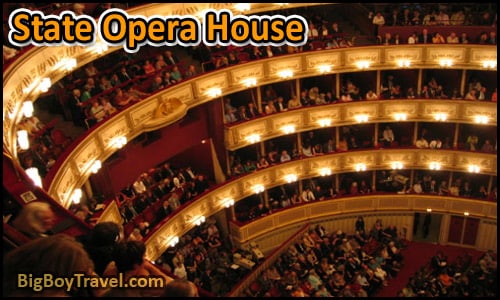
About The State Opera House : In a city famous for music and the arts, it is the grand Vienna State Opera House ( Staatsoper ), that definitely takes the prize. Opened in 1863, this gorgeous 1200 seat theater has housed some of Austria’s most famous classical musicians and still hosts over 300 performances a year. The beautiful theater and grand common areas make touring the Opera House amazing. If you are looking to catch a show, you can expect to choose from famous operas, ballets, and can even take part in large Viennese Balls each February.
This monument to music is the perfect place to start our free Vienna walking tour as the arts have been such an important part of the city’s culture and history. It was in Vienna where the Waltz was born and where Mozart wrote his famous opera The Marriage of Figaro. The building of the opera house was part of a larger protect in the mid-1800s where the Emperor replaced Vienna’s Medieval moated wall with grand buildings and a modern boulevard known as the Ringstrasse. Will will revisit the Ring Road at the end of this walking tour.
Guided Tours : 9€ for Adults; 4€ for kids; also includes the Opera Museum; 1-6 tours daily ( check website ). Tour is great and brings you to a lot of backstage areas. Live Performances : Tickets range from 16-215€, can be bought online , and go fast. Ticket Tip : If a show is sold out or if you just want a taste of a show without sitting through a 3-hour opera or ballet, they sell 567 standing room tickets the day of each performance, 160 of these tickets are right below the Emperor’s Box. Standing Room tickets are cheap, 2€ upstairs and 3.50€ downstairs, and allow you to easily leave when you’ve had your fill. These tickets go on sale 60 minutes before each show at the front door and 80 minutes before the show inside the side door at the Standing Room ( Stehplätze ) booth which always has a short line. Interactive 360 Degree Tour : ( 360 Degrees During a Viennese Ball ). Opera House Website : ( HERE ).
2. Castle Park ( Burggarten ):
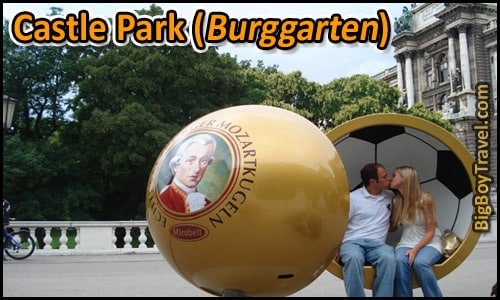
About Burggarten : Covering the entire backside of Hofburg Palace’s Neueburg wing is the large and peaceful Castle Park ( Burggarten ). From the 1200s through the 1500s, the Castle Park you see today part of a wide protective moat that circled Vienna’s Medieval city wall. It was these strong defenses that protected the city and stopped the Ottomans from taking over Europe in Siege of Vienna in 1529. After some further attacks in the mid-1600s, this Western section of the city wall was bumped outward to create a buffer zone for the nearby Hofburg Castle which also allowed the castle to gradually expand into a sprawling multi-wing palace.
By 1710, there was a vast private Royal park that started here and stretched a 1/2 mile to the Northwest along the inside of the expanded city wall. With the new found space in this huge Castle Park, the Habsburg rulers were able to build over their former private park, called the Paradise Royal Garden , to establish the Winter Riding School and National Library. We will visit both the riding school and library later on this free Vienna walking tour.
In 1806, Napoleon Bonaparte and his French forces heavily damaged the city wall and bastions near Castle Park before occupying the city, declaring an end to the Holy Roman Empire , and later marrying into the Habsburg family in 1810. A new curtain wall was added to repair the damage left by the French and Emperor Franz Joseph I got to work transforming this section of the park into a fenced-off private English Garden . During the park upgrades, around 1819-1820, Emperor Franz Joseph I had a statue of himself on a horse moved from the old Paradise Royal Garden to the pond in Castle Park. Cast in 1781, the statue is the oldest equestrian statue in Vienna and still a focal part of Castle Park.
Today the Castle Park has an awesome backdrop of the enormous Neueburg wing of Hofburg Palace ( built from 1881-1913 ), which was we will visit later on this free Vienna walking tour. The new building divided the Royal park in two separating the English Garden which forms today’s park from the rest of the grounds.
Just five years of Neueburg was finished, the monarchy fell in 1918 and the private Castle Park became a public park almost overnight. More statues were brought into Castle Park from around Vienna after WW2 including one of Hercules originally cast in 1770. Our favorite piece that was brought in is the white-wash Mozart statue which was carved in 1896 and previously sat in nearby Albertina Square. Make sure to take time to relax in the park just like the Viennese royals used to do.
3. Palm Tree House ( Palmenhaus ):
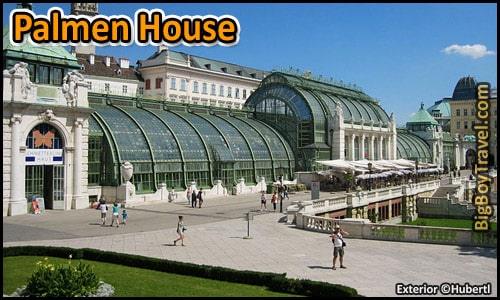
About The Palm House : While revamping his private Castle Park in 1823, Emperor Franz Joseph I also had a huge two-winged greenhouse built on the Northeastern end of the royal garden dubbed the Palmen House. This gigantic greenhouse was built right over the foundation of a section of Vienna’s Medieval city wall that dated back to the year 1200. The Palmen House was a huge luxury for the royal family as it was able to grow tons of tropical plants and palm trees even in the coldest Austrian days.
In 1902, the Palmen House was expanded to over 22,000 square feet and remolded in its current Art Nouveau-style . In modern times, the Palmen House has been turned into a really unique restaurant where you can eat under the palms trees even in the dead of Winter. Especially if you have kids with you, consider stopping at the tropical Butterfly House ( website ) which is attached to the North side of the restaurant.
Palmen House Restaurant Hours : Monday-Friday 10am-Midnight; Saturday 9am-Midnight; Sunday 9am-11pm. The outdoor terrace bar is open until 2am in Summer. Restaurant Website : ( here ). B utterfly House Cost : Adults 7€; kids 4€.
3. Albertina Museum :
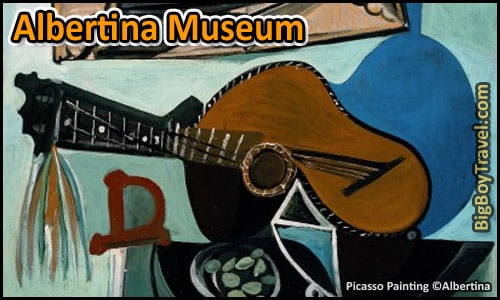
About The Albertina Museum : The Albertina Museum is a breath of fresh air house priceless art inside a stately villa. The most prized pieces are the works by Albrecht Dürer including the Young Hare from 1502 ( original is displayed twice every 5 years, but an exact copy is shown daily ). Other paintings & sketches include works by Monet, Picasso, Chagall, Klimt, Raphael, Warhol, and Rubens.
Like the Palmen House, the Albertina Museum was built over part of the early-Medieval wall section ( called the Augustine Bastion ) dating back to the 1200s. The property first served as the office for the Royal Court Building Authority before it was rebuilt as a mansion for Count Emanuel in 1744. This stately villa was later gifted to Duke Albert by Emperor Franz II in 1794. After moving in, the powerful Duke Albert started to display his private collection of works from old world master painters in the mansion which laid the groundwork for today’s museum. The works include the artists Da Vinci, Michelangelo, Dürer, Rembrandt, and Ruben.
Over the generations the Duke Albert’s family owned the villa, the back of it was expanded into parts of the neighboring Augustiner Monastery . The historic Augustiner Church was the only part of the block-long monastery complex ( built in 1327 ) which was spared from the expansion of the Albertina Mansion. The church is famous as the location of many of the Habsburg imperial weddings including that Marie Louise to Napoleon Bonaparte in 1810. The Augustiner Church also holds the hearts of the former Hapsburg rulers.
The most famous of the 20 staterooms added onto the villa are the ones built for Maria Christina ( 1858-1929 ), the only one of Marie Antoinette’s siblings who was allowed to marry for love. The opulent rooms are typically called the Spanish Apartments because of Maria Christina’s marriage to the Spanish King Alfonso XIII. Her sister Marie Antoinette even stayed in the apartments before being sent off to France for her arranged marriage with King Louis XVI. Our favorite of the staterooms is the Hall Of Muses which is ringed with Greek statues and lit with 5 crystal chandeliers holding 258 candles.
Make sure to check out the wonderful bronze statue of Duke Albert on the terrace near the museum entrance. At the street level below the statue, there is also a magnificent fountain depicting the river God Danuvius and the embodiment of Vindobona, Vienna’s name in Roman times.
Museum Cost : 16€ for Adults; 19-26 years old 11€; Children under 19 are free; guided tour 4€. Online Tickets : To skip the line and get a mobile-friendly ticket you can book HERE . Museum Hours : Daily from 10am-6pm; until 9pm on Wednesdays & Fridays; best after Noon. Museum Website : ( here ).
4. Sacher Café :
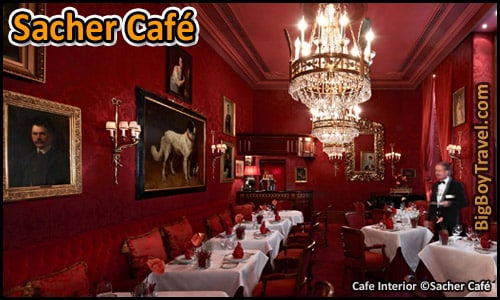
About Sacher Café : Sacher Café is known for having the best slice of chocolate cake you can find anywhere. Their world-famous cake , known as the Original Sacher-Torte, was the creation of chef Franz Sacher who was asked to make a dessert for a Hapsburg royal party in 1832 while only 16 years old. Word of the Sacher’s amazing cake spread and he quickly became a household name.
Forever known as the family of rich cake, Sacher’s son Ed opened the Sacher Hotel and Café in 1876 and spared no expensive decorating every elegant detail. When Ed died 16 years later, his wife Anna took over and pushed the property to gain global recognition as one of the best hotels , all while continuing to sell the famous cake of course.
The Gürtler family has been running the Sacher Hotel and Café since 1934 and it remains one of the very few privately owned five-star luxury hotels in the World. The Sacher Café has been the meeting point for famous figures from Gandhi, and Queen Elizabeth II to John F Kennedy. A visit to Sacher is truly a must while in Vienna and even if you are on a budget just 8€ can get you a really good coffee and an excellent slice of cake.
Inside the Sacher Hotel, there are three different colored fancy salons for dining in addition to the main cafe plus the 2-story Eck which views over the Opera House. If there are crowds hoarding the fancier dining area of the cafe consider buying your Sacher cake at the neighboring Sacher Stube Café which is run by the same family. If you are confused and which coffee goes best with the cake, the traditional drink in Vienna is hot black coffee with foamed milk and whipped cream.
Hours : Daily 8am-Midnight. Photos : ( Treat Photos via their Facebook Page ). Restaurant Website : HERE . Cafe Website : HERE .
6. Anti-War & Fascism Monument :
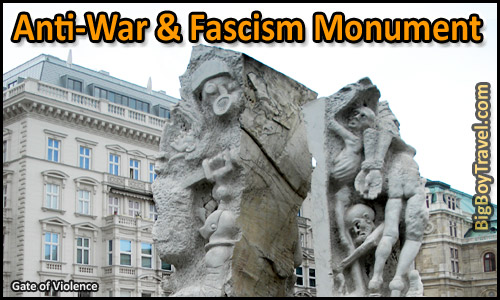
About The Monument : In the late-1800s a huge luxury apartment complex named Philipphof was built right in the middle of this large open courtyard overlooking Albertina Square. Previously the courtyard had been a Medieval pig market before being turned into the apartments in 1882. During the construction, they found even more history when they dug up an ancient Roman grave and a 21-foot section of Roman road.
Sadly in the height of WW2, hundreds of residents sought shelter in the basement of the Philipphof Apartments and were buried alive in an air raid on March 12th, 1945. The bombing was so heavy that most of the victims’ bodies couldn’t even be recovered from the rubble. With the memory of the war victims in mind, a series of statues were erected in 1988 on the site of the former apartment which now serves as the Anti-War and Fascism Monument.
The Anti-War Monument is primarily made up of four artistic pieces which highlight the violence and tragedy that Austrians faced in WWII while under Nazi rule. The most predominant part of the monument are the two large carved marble columns called the Gate of Violence which represent the victims of war and the concentration camps. The graphic images on the columns are actually carved into stone that came from Austria’s Mauthausen Concentration Camp. Another heartfelt piece is the bronze figure kneeling and covered in barbed wired while scrubbing the street which is meant to be a reminder of the humiliation many Jews went through before being more formerly persecuted. There is also a memorial for the people who died in an air raid of the Philipphof Apartments and the final section celebrates a free Austria after the end of Nazi rule.
In 2009, the open square was renamed Helmut Zilk-Platz after the Mayor of Vienna who pushed for the monument to be built in the 1980s. The gravity of a visit is definitely is worth a moment of silence and reflection to take it all in. Knowing the history behind what you are looking at makes the Anti-War & Fascism Monument one of the most moving stops on our free Vienna walking tour.
7. Imperial Crypt ( Kaisergruft ):
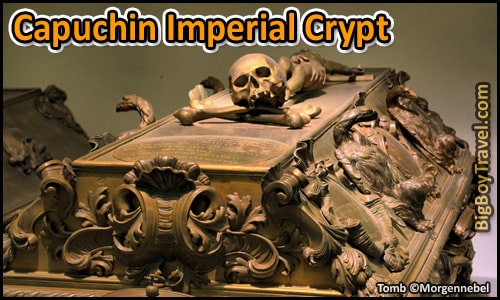
About The Imperial Crypt : The unique and slightly creepy Imperial Crypt below the Capuchin Church is a true must-see on our free Vienna walking tour. The church was part of the Capuchin Monastery, founded in 1617 by the Holy Roman Emperor Matthias’ wife Anna. Just one year later Anna died followed by her husband in 1619 which lead the way for their nephew Ferdinand II to take over as Holy Roman Emperor. In honor of his family, Ferdinand II started work on a royal crypt below the Capuchin Monastery in 1622 which took 11 years to finish because of delays from the 30 Years War.
The tombs of Emperor Matthias and Empress Anna were the first to be moved in the Imperial Crypt which has since been expanded eight times to hold elaborate tombs of some of Austria’s greatest leaders. In total there are bodies of 150 members of the Hapsburg royal family buried at under the Capuchin Church. Oddly it is really only the bodies in the tombs as the Habsburgs’ organs are not buried here . The royal guts are actually housed below Saint Stephen’s Cathedral and their hearts are in the Augustiner Church. While the Crypt has huge visual and photogenic appeal, it is also a very informative experience. The most visited tombs are those of Empress Maria Theresa and Emperor Franz Joseph.
In front of the Capuchin Church is New Market Square which served as one of the main markets in Roman times when this area of town was a civilian settlement just outside the walls of the Vindobona fort. The square was given a makeover as the new city of Vienna was laid out in the 1200s and became it a grain market. The beautiful fountain from the 1700s is called the Fountain of Providence ( Providentiabrunnen ). This is a replica as the original fountain was moved from here to Belvedere Palace because the central statue had a bare-chested lady on it. Many of the buildings surrounding the square were leveled by bombing in WW2.
Crypt Cost : 7.50€ for Adults or 4.50€ for kids. Visiting Hours : Daily from 10am-6pm ( last admission 5:30pm). Guide Tours : Wednesday-Saturday 2pm in German and 3:30pm in English for 3€ extra. Crypt Website : HERE .
8. Carinthia Road ( Kärntner Strasse ):
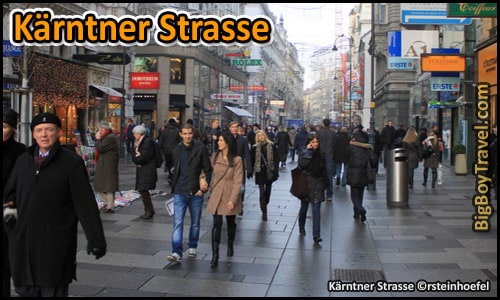
About Kärntner Strasse : Today the pedestrian-only Kärntner Strasse is one of Vienna’s most popular streets lined with great shops and places to eat. If you need to get any souvenirs for yourself or gifts while in Vienna then Kärntner Strasse is a perfect place to look. A stroll down the street offers excellent people watching, window shopping, and even your fix of American fast food, but we suggest sticking to the local cafes to get the true Viennese feel.
Back when Vienna was fortified military camp of Vindobona ( 97-433AD ), Kärntner Strasse cut right through the 24,000-person urban settlement surrounding the fort. Initially called the Strata Carinthianorum , it cut straight South from the fort’s Eastern gate and past the main civilian market. The name Kärntner Strasse comes because the road led to Austria’s Southernmost state of Carinthia ( Kärntner ) which sits on the modern Alpine border with both Italy and Slovenia.
Kärntner Strasse became more important after the 50,000-person regional Roman capital of Carnuntum just 30 miles East of town fell in 395. This caused the North-South trade route called the Amber Road ( Bernsteinstraße ) to be re-routed from Carnuntum right down the center of Vindobona. The route which started in Saint Petersberg, Russia on the Baltic Sea and transferred precious amber to Rome, Greece, and even Egypt in the South with access later to the port of Venice.
While many of the Roman camps never recovered after the Northern part of the Empire collapsed by 433AD, Vindobona was reborn as Vienna ( Wien ) in 881AD . The re-foritifcation and re-settlement of the town was largely thanks to its river access and ability to sustain itself with trade routes like Kärntner Strasse.
The road finally got its own gate into the city when the old Roman walls were expanded outward in 1257 to make way for a growing Vienna. Through Medieval times, Kärntner Strasse even had a drawbridge and bastion over the city’s moat. Over the centuries, modern-day Kärntner Strasse was re-revamped along with the town and has remained one of the busiest shopping streets in Vienna.
8. Staff In Iron Square ( Stock-im-Eisen Platz ):
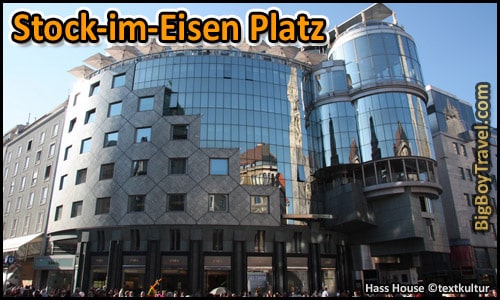
About Staff In Iron Square : As you reach the end of Kärntner Strasse, look immediately to your left and check out the Palais Equitable before getting distracted by any nearby sights. The humongous mansion was built for an American insurance company in 1891 in place of five Medieval buildings on what was once the small square called Staff In Iron Square ( Stock-im-Eisen Platz ). The square, which in ancient times was a Roman cemetery, was named after the historic nailing tree which sits encased in glass on the corner of the Palais Equitable.
The nailing tree ( nagelbaum ) grew nearby in the early 1400s and was used by travelers who pounded nails into it for good luck. The gesture was considered a sacrifice because in the Middle Ages iron nails were quite valuable. While the tree was cut down in 1440, the trunk continued to be used as a nailing tree, was put on display in 1548, and later iron banded by the former homeowner Hans Buettinger. As you inspect the Palais Equitable mansion, you’ll see reliefs on the doors showing the legend of the nailing tree.
In the 1900s, the North side of Staff In Iron Square was opened up to connect to Saint Stephen’s Square which we will visit next on this free Vienna walking tour. The focal point of this new construction is the very modern 8-story tall Haas House with flowing, curved glass walls. The building truly was meant to blend the old with the new as it sits right on the Southern corner of the former Roman camp Vindobona.
During the construction of the Haas House in 1990, it was very controversial that it was built anchored into some of the ancient Roman wall ruins. Make sure to get some photos of the Saint Stephen’s Church reflecting in the windows . If you are not too rushed and want the best view of Saint Stephen’s Church, head to the coffee house on the top floor of the Haas House for a unique perspective. The concept behind the design was to trace the Roman wall and provide a mirror image of Vienna’s largest church.
If you have an extra minute, make sure to go down into the subway station to see the underground Saint Virgil’s Chapel ( Virgilkapelle ) which was unearthed 40 feet below the ground in 1973. The old world chapel was carved out below the former Roman graveyard in 1220 as a private place for the Vienna’s wealthy residents to worship. Greek crosses, which can still be seen on the stone walls today were painted in 1246. In 1338 the funeral Chapel of Saint Mary Magdalene was built above the Saint Virgil’s which then became a bone house. A faint an outline of the former Saint Mary’s Chapel ( burned down in 1782 ) can be seen in the pavement as you approach Saint Stephen’s Square.
10. Saint Stephen’s Church ( Stephansdom ):
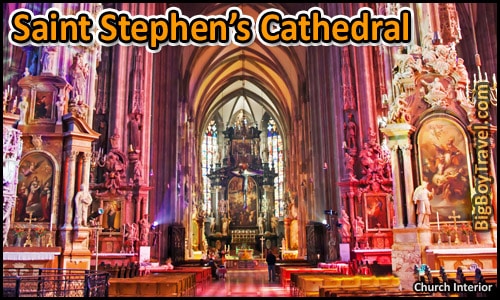
About Saint Stephen’s Church : The massive Gothic-style Saint Stephen’s Cathedral is the focal point and geographic center that modern Vienna orbits around. Saint Stephen’s started as a small parish in 1137 , in a large Roman cemetery in the former civilian area just outside of the walls of Vindobona. While Saint Stephen’s Chapel wasn’t finished until 1160, it was dedicated early in 1147 in the presence of King Otto II who was heading out to join the 2nd Crusade.
From 1230 to 1245, the chapel was completely redone as a larger Romanesque church with an impressive door and towers. Unfortunately, the Romanesque church burned down in 1258, but the front door and towers were saved and worked into the facade of the rebuilt church which was completed in 1263 over the ruins.
Looking at the front of Saint Peter’s today, you can still see the outline of the original Romanesque church towers. Working their way about halfway up today twin peaks you can see the change in the stone as they were extended upward in the rebuild and named the Roman Towers ( Heidentürme ) . The 213-foot-tall towers got their name because they were built using pieces of the former wall of the heathen ( heiden ) Roman military camp called Vindobona. Keep in mind that during the time of the Roman settlement here, the Empire did turn Christian under Constantine so calling them heathen was more of the Medieval Duke’s way of appearing greater than their predecessors.
Saint Stephen’s finally got official Cathedral status shortly after the construction began on the Gothic-style Albertine Choir on the North end of the Church in 1359. The large choir, with three naves, has fantastic Medieval stain glass windows which are the only ones in the church to survive WW2. Instead of merely remodeling the rest of Saint Stephen’s original Romanesque interior to match the Gothic choir, they built a new church around it instead. New sidewalls were added outside of Saint Stephen’s, with a vaulted wooden roof hovering 125 over the floor. After the new walls and roof completely encapsulated Saint Stephen’s Church, the old side walls were simply removed.
By far the most iconic thing to come out of the Gothic-remodel is the mega-sized South Tower called Old Steve ( Alter Steffl ) . At 466 feet tall, the gigantic tower dominates Old Town Vienna from every angle. We highly suggest taking the tiring 363 steps up to the top for the best views of Vienna. If you aren’t up for the hike up the Old Steve, consider taking the elevator up the North Tower ( Nordturm ) instead. The stumpy North Tower was supposed to be a complete match to Old Steve, but construction stopped in 1511 freezing it at 231 feet tall. While excavating for North Tower in 1443, they found a thighbone of a mastodon and placed it above the church’s front door nicknaming it the Giant’s Door ( Riesentor ) .
The North Tower is best known for its large bell, appropriately named Boomer Bell ( Pummerin ) , which famously rings each year at midnight on New Year’s Eve. The was cast out of Turkish cannons after the Siege of 1683, is over 20 tons in weight and 10 feet in diameter. It is considered the 2nd largest free-swinging bell in Europe. From either side tower, you will also get a great view of the brightly colored ceramic tiled roof which replaced the wooden one burn in WW2. The patterns on the roof include a double-headed eagle which is the crest of Vienna.
As you wander around Saint Stephen’s Cathedral there are a lot of exciting details worth noting. We really love the centrally located sandstone pulpit carved in 1510. It shows faces of the four fathers of the Latin Church ( Ambrose, Jerome, Gregory and Augustine ) as well as the artist who carved it peaking through a window near the stairs. Below the Medieval glass windows of the nave is the baroque New City Altar ( Neustädter Altar ) carved in 1447. Near the altar is the tomb of Emperor Frederick III who is one of the only Habsburgs to be buried outside of the Imperial Crypt. Below Saint Stephen’s Cathedral, you can tour the catacombs where the guts of the Habsburgs rulers are stored along with the bodies of Vienna’s cardinals and archbishops. The catacombs also have stacks of bones as bodies were tossed down here during a plague in the 1700s when the cemetery surrounding Saint Stephen’s Church was closed.
Around the Saint Stephen’s exterior, you can see the stark color difference where coal pollution darkened the church’s white limestone and where it has been cleaned. You will also see dozens of headstones from former church cemetery’s worked into the building’s facade. Speaking of death, Mozart had his funeral at Saint Stephen’s in 1791. The famous composer not only spent time working at the church, but was also married here in 1782.
Cathedral Hours : Monday-Saturday 9-11am & 1-4:30pm ( restricted access starting at 6am ); Sundays not until 1pm; Tower Climbs Daily 9am-5:30pm. Cost : Cathedral entrance is free but restricted unless you pay 6€ for the audio guide; North Tower 6€; South Tower 5€; Treasury 5.50€, Catacombs 6€ ( takes 30 minutes ). Discounted Online Tickets : You can skip the lines, save money, and get a mobile combo ticket for the South Tower, North Tower, Cathedral tour, Catacombs Tour, Treasury Tour, and audio guide HERE . Religious Service : Sundays & Holidays at 10:15am, 9:30am in July & August. Tower Access : South Tower via 363 steps or North Tower with elevator. Cathedral Website : ( here ).
11. Mozart’s Vienna Apartments ( Mozarthaus ):
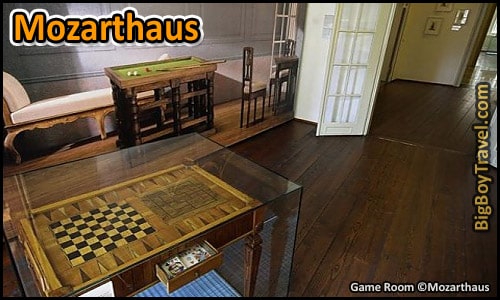
About Mozart’s Apartments : Most of Mozart’s life was spent in his hometown of Salzburg, but he also had close ties to Vienna. It started when Empress Maria Teresa brought the young prodigy in to play a concert at Schönbrunn Palace as a child and continued when Mozart moved here in 1781 to get out from under the thumb of Salzburg’s archbishop.
Mozart was taken in by Vienna’s Archbishop Colloredo and lived his monastery for six weeks in the year 1781 from March 16th until May 2nd. The monastery was built in 1375 for the Teutonic Knights, and its intimate Sala Terrena concert hall where Mozart performed still hold live chamber music performance you can attend. Sala Terrena is Vienna’s oldest concert hall and was painted the Venetian late Renaissance style in the mid-1700s making it a fantastic place to hear a string quartet.
After leaving the monastery in 1781, Mozart moved in on the Graben near Saint Peter’s Square with the Weber who was in Vienna from Mannheim, Germany. Mozart had met the family in German in 1777 where he tried to court the daughter Aloisa, but ended up marrying their younger musician daughter Constanze in 1782 at Saint Stephan’s Cathedral. The couple moved around before settling on a lavish apartment behind the cathedral known today at the Mozarthaus Museum where they lived from 1784-1787.
The family’s apartment only had 4 main rooms, but with its city center location and rich details cost 450 florins a year to rent which was more than Mozarts dad’s annual salary. Although Mozart was horrible at saving money, he was making a lot of it teaching piano to young aristocrats mixed in with significant commission works. To the sculptured ceiling in the Camesina room. The Mozarthaus Museum is quite popular with theatergoers as the apartment is where Mozart wrote his famous opera The Marriage of Figaro which premiered in Vienna.
Most of the items on display at the Mozarthaus Museum today are from the time of Mozart and not actually his stuff , but it all helps to give a peek into his time here. Tours start on the 3rd floor of the building covering details of Mozart’s time in Vienna. The displays focus on where Mozart lived and performed, who his friends and supporters were, his relationship to the Freemasons, his passion for games and much more. The presentation on the 2nd-floor deals with Mozart’s operatic famous works he wrote while living here, and the apartment on the 1st floor focuses more on Mozart and his family. The basement also has a vaulted ceiling event space that often holds piano concerts.
Mozarthaus Cost : 11€ for Adults, 4.5€ for Children, also has a family rate of 24€ ( up to 2 Adults, 3 kids ). Discounted Tickets : You can save money and get a free audio guide by pre-booking HERE . Mozarthaus H ours : Daily from 10am-7pm; last entrance 6:30pm; least crowded 10am-Noon. Mozarthaus Website : ( here ). Sala Terrena Concerts : 90-minute concerts are on Thurs, Fri, & Sun at 7:30pm and Sat at 6pm. Sala Terrena Website : ( here ).
12. Graben & Plague Monument ( Pestsäule ):
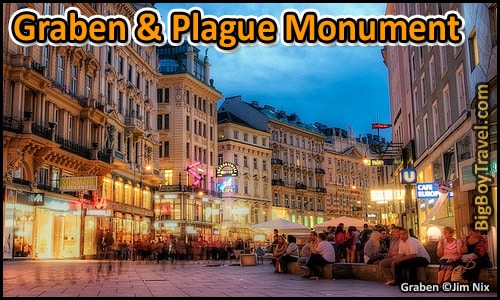
About The Graben : The Graben ( meaning ditch ), was once used as a dry moat by the Romans along the Southern wall of their ancient military camp Vindobona ( 97-433AD ) which pre-dates Vienna. With Vienna’s population growing the graben was filled in and the walls were expanded outward in the 1200s. A King’s ransom largely funded this massive project, and it’s from a tail you may have heard of before.
After fighting together in the 3rd Crusade, Duke Leopold V of Austria captured King Richard I of England ( also known as Lionheart ) over a dispute. King Richard ( of Robin Hood fame ) was held as a prisoner for 14 months from 1192-1194 while his brother Prince John sat on the throne. It’s said that Pince John offered to pay the Duke to keep his brother longer so he could stay on the throne. King Richard, I was finally released after a colossal ransom to the Holy Roman Emperor, of which Austria got 35 metric tons of silver ( worth over $15 million today ).
For the next 60 years, this ransom money was used on projects in Vienna from establishing the Austrian Mint, filling the Graben, building churches, and expanding the city wall. With the wall expansion completed by 1257, the Graben quickly became a market and busy shopping street. The first of two elegant fountains along the Graben is dedicated to Duke Leopold V for getting the money to start the project.
The half-timber Medieval homes first lined the boulevard are now gone, can see the wealth the shopping has generated by the elegant facades of massive buildings that line the Graben. We love walking here as the Graben became Vienna’s first pedestrian-only area in 1974 and it feels built for people watching. If you happen to be in Vienna during Advent ( late-November through Christmas ), you need to put a night-time stop at the Graben on the top of your list as its endless strings of holiday lighting are magical.
Americans visitors often overlook the impact of the epidemics in Europe during the Middle Ages making the Plague Monument ( Pestsäule ) in the center of the Graben an important attraction. The 69-foot-tall column was built in 1693 to honor the 1/3 of Vienna’s population who died in the Plague of 1679 and pays thanks to God for the ones who survived. The golden-capped Baroque column replaced a previous column dedicated to the Holy Brotherhood. It was the Brotherhood of the Holy Trinity who was among the first groups in Europe to use science to stem the plague in a time where religion and superstition trumped all.
Photos : ( Night Time During Advent ).
13. Saint Peter’s Church ( Peterkirche ):
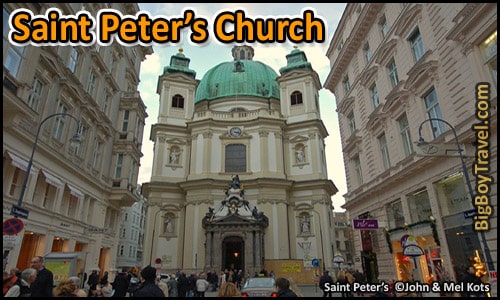
About Saint Peter’s Church : As you turn the corner off the Graben down Jungferngässchen Alley you catch your first glimpse of the green-domed Saint Peter’s Church. Entering the alley, you are also crossing what was once the Southern wall of the Roman fort Vindobona ( 97-433AD ). Local folklore says a larger Romanesque-style church was built here by Emperor Charlemagne between 792-800AD while the former camp was being re-fortified.
While Charlemagne church story may be true, records show that the first church here named Saint Peter’s was finished in 1137 before the original city walls were expanded outward. The church which was later run by the Scottish Monastery which burned down in the late-1600s giving way to the Baroque masterpiece you see today.
Completed in 1732, today’s Saint Peter’s Church is one of the hidden gems on this free Vienna walking tour. We are amazed the builders were able to fit such a large structure tightly tucked into a small square . When you get inside the church, you quickly forget how small the plot of land is that it sits on. This is because the builders used an open layout and unique dome to make Saint Peter’s Church feel huge. Unlike most churches, Saint Peter’s is actually oval shaped instead of round to take maximizing the space to a whole new level.
Most people walk by taking a couple of pictures of the exterior and leave, don’t be one of those people. Take a couple of minutes to step inside, inspect the beautiful marble interior, and see if you can make out the dome’s oval shape.
Hours : Monday-Friday 7am-8pm; Weekends 9am-9pm. Cost : Free. Tours : Daily 9-10am & 1-3pm. Interactive 360 Degree Tour : ( Interior ). Church Website : ( here ).
14. Vindobona & In Court Square ( Am Hof ):
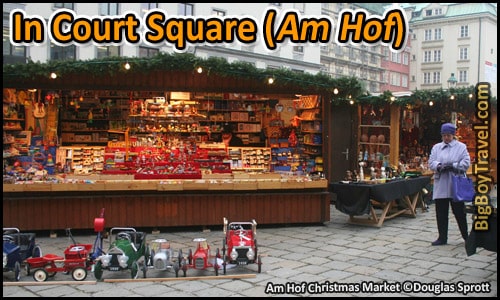
About Vindobona & Am Hof : Lightly settled by the Celts in 500BC, the groundwork for modern-day Vienna was laid out from 15-97AD as a fortified Roman camp named Vindobona ( meaning White Village ). Outlined on our free Vienna walking tour map, the walled Vindobona fort marked the edge of the Roman Empire at the time and was used to help fight off Germanic forces North of the Danube River.
While the nearby regional Roman capital of Carnuntum was much more significant with over 50,000 residents, at its peak Vindobona was home to 6,000 soldiers inside its walls and another 24,000 residence in the surrounding urban area. The most famous moment in the history of the camp was when Roman Emperor Marcus Aurelius died here in 180AD. After the Northen Roman Empire fell in 433AD, the remaining citizens around Vindobona moved inside the walls of the abandoned camp, and the population drastically declined.
The former camp was re-fortified in the 800s including a small Berghof Restsiedlung Castle to help defend against Magyar ( Hungarian ) armies. The castle was built over the Roman thermal baths between the Hoyer Market and Saint Ruperts Church. Shortly after the refortification, Vindobona took the name Vienna ( Wein ) in 881 after the Vienna River ( Weinfluss ) which is Celtic for Wood Creek .
In 1156, Heinrich II of Babenberg was forced by the Holy Roman Emperor to give up his title Duke of Bavaria to Henry the Lion and was named the 1st Duke of Austria by the in return. With a fresh canvass at his disposal, Heinrich II moved to Vienna and built Castle Babenbergerpfalz inside the old Roman wall. The new castle sat right on the foundations of Vindobona’s former barracks and armory in the former fort’s Southwest corner ( where today’s Am Hof Church and Park Hyatt Hotel are ). The large square next to the castle became the city’s 1st established Royal Court ( Am Hof ) . So if you stay in the Park Hyatt ( website ) today, you are not only staying at one of the best hotels in town, but also over the former castle.
The Duke really wanted to impress his wife Theodora Comnena, who was a Byzantine princess, with is new city plans. He used is former home, and capital of Bavaria at the time, Regensburg, Germany as the model to layout Vienna. Under Heinrich II’s rule, Vienna quickly became the 2nd largest city in the Holy Roman Empire behind Cologne, Germany.
Five years after the last Duke in the Babenberg family died in 1246, Ottokar Duke of Moravia ( King of Bohemia ) was elected Duke of Austria and significantly expanded the Kingdom to stretch all the way to the Adriatic Sea. Ottokar also started to expanded Vienna’s city walls outward and built a new four-towered royal castle called Hofburg on the Southern edge of town ( see photo ).
In 1273, Rudolf I of Hapsburg ( King of Germany ) was elected the new Duke of Austria, but Ottokar wouldn’t give up his title which led to his death on the battlefield. Rudolf’s success led to 645 years of Hapsburg rule over Austria including over 300 years as Holy Roman Emperors ( 1483–1806 ). While the royal court was officially moved to Hofburg Castle, Am Hof Square at Castle Babenbergerpfalz continued to be used for jousting tournaments and a market.
While most of the old Castle Babenbergerpfalz was removed, part was rebuilt as the Gothic-style Am Hof Church in 1386. The church was given its current white Baroque facade in 1662, and the Mariensaeule ( Marian Column ) was added to the center of the square. The column, finished in 1667, was commissioned by the Holy Roman Emperor Ferdinand III to thank the Virgin Mary for repelling the Swedish forces during the 30 Years’ War. In 1806, having defeated the Austrian army, Napoleon announced the end of the Holy Roman Empire from the balcony of the Am Hof Church. This move split the former territories up and established the Austrian Empire.
Am Hof Square got a rise in pop culture thanks to the hit 1949 movie The 3rd Man . Many scenes from the famous film take place here from Anna’s door to Orson Welles’ character Harry Lime casting a long shadow in the alleyway North of the Church. In the cellar of the Am Hof Square’s Fire Brigade Building, you can still find the remains of a main brick drain from the ancient Roman sewer system beneath Vienna.
For more Vindobona sites check out the Roman Museum ( website ) under Hoyer Market. Located on one of Vienna’s oldest market squares, the museum has a great collection of authentic Roman era artifacts. The best objects are the intact sections of soldier homes and underground heating they found below the square. We also like stopping Saint Rupert’s Church which is Vienna’s oldest church dating back to 740 and sits near a maze of Medieval streets.
15. Kohlmarkt & Demel Café :
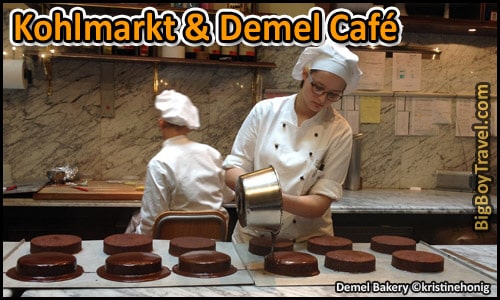
About Kohlmarkt : The prestigious Coal Market ( Kohlmarkt ) shopping lane is home to Vienna’s most luxurious stores . From Tiffany’s to Gucci and Louis Vuitton you’ll find a little bit of everything for today’s high-end buyers. In Roman times, this road led to the main Southern gate tower ( Peilertor ) of the walled fort called Vindobona ( 97-433AD ) which pre-dates Vienna. It was an important road as two blocks outside the walls it intersected with a civilian bypass of the Lime Road ( Limesstrasse ) trade route around the fort before continuing all the way through Linz to Salzburg ( then called Juvavum ).
When the Roman wall was extended outward in 1257, the lane remained vital as it connected the new Royal Castle ( Hofburg ) to the heart of Vienna. While the name Coal Market came from the coal dealers who once set up shop here, it quickly became a prestigious shopping area. Kohlmarkt was soon home to the shops of various jewelers appointed by the Royal Family and gained the nickname the Golden U .
During the 1700s, the street blossomed into a well-rounded, high-end shopping street. Even the original city gate tower, called the Direction Finder Tower ( Peilertor ), also remained an essential feature of Kohlmarkt. Through Medieval times the tower ( rebuilt in 1511 ) served as a watchtower and jail until it was removed for traffic concerns in 1867.
Today the lane is a real treat, especially during Advent when hanging lights give Kohlmarkt a beautifully lit temporary ceiling. While you window shop along Kohlmarkt, the one place you have to make sure to stop at is the Demel Café & Bakery . Dessert artist and baker Ludwig Dehne moved to Vienna from Wuerttemberg in 1786 and quickly impressed the Emperor with his skills. In the bakery’s early days, all the ladies of importance in Vienna came to the cafe to drink a cup of hot chocolate on the first cold day of the year.
Ludwig’s cafe business did so well that it gained the esteemed prefix K. u. K., or König und Kaiser , meaning “good enough for the king”. With Vienna being a trend-setting cafe town, Ludwig’s bakery became a favorite meeting point of the aristocracy as well as of the bourgeoisie. In 1857, Ludwig son August sold the shop to his first assistant Christoph Demel giving the cafe its current name. Even though it is a fancy place, Demel offers a 10€ cake and coffee deal, along with their other amazing chocolates and desserts to make your mouth water.
Demel Hours : Daily 9am-7pm. Demel Website : ( here ).
16. Michael’s Square ( Michaelerplatz ):
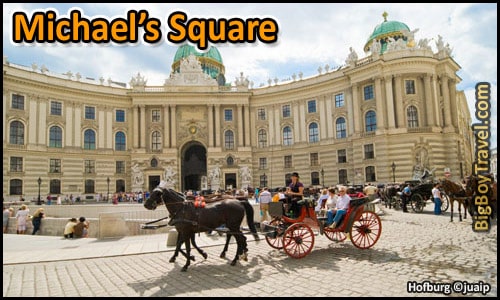
About Michael’s Square : Michael’s Square is dominated by the Baroque facade of Hofburg Palace’s Saint Michael Wing . This huge building was completed in 1889 in place of the old Royal Theater ( Burgtheater ). The former theater had opened here in 1741 inside an unused Royal banquet hall and was where many famous musical premieres took place. These premieres included Mozart’s Marriage of Figaro in 1786 and Beethoven’s 1st Symphony in 1800. While the first sections of the Royal Castle ( Hofburg ) were built near the Square in the mid-1200s, it’s been a critical intersection for nearly 2,000 years .
In Roman times, a civilian bypass of the Limes Road ( Norica Limes ) around the legion fort Vindobona ( early day Vienna ) met the main road into the fort’s Southern gate at Michael’s Square. The intersection also connected to a secondary route to Linz and Salzburg, but the diagonal bypass off the Limes Road ( seen as Herrengasse Street on modern maps ) was the big driver of traffic. The Limes Road essentially marked the Northern border of the Roman Empire while linking the 30 main legion camps along the Rhine and Danube Rivers from the North Sea all the way to the Black Sea.
At the crossroads of Michael’s Square stood a large guarded Roman Legion outpost ( Canabae Legionis ) to help protect the South side of the fort, its 6000 soldiers, and the 24,000 area civilians who lived outside of Vindobona’s walls. Eventually, the Limes Road broke down from hostile invasions ( Huns & Germanic Goths ) and most of the Northern Roman Empire collapsed by 433AD. Vindobona was largely abandoned until it was re-fortified as Vienna in 881AD, but luckily remains from its Roman roots are still easily found.
Ruins of the Roman Legion outpost at Michael’s Square were excavated in 1990, unearthing an entire neighborhood of Roman building foundations and ancient sewers. In addition to the guard houses, the outpost buildings were believed to have included shops, an inn guesthouse, and a brothel. Further excavations around Michaelerplatz have shown that the Romans also had created a long aqueduct to get water from the surrounding hills as well as several canals dug all the way to the Danube River.
The Roman Legion outpost was essentially like a small suburb , although it wasn’t given a town charter. The civilian settlement spread out many blocks from Michael’s Square and foundations of half-timber homes have been found in the courtyard of the Globe Museum ( Herrengasse #9 ), Porcia Mansion ( Herrengasse #9 ), and the Harrach Mansion ( Freyung #3 ). You can see the extent of the civilian settlement centered on Michael’s Square to the South of the square Vindobona fort here .
Before leaving the square, make sure to check out Saint Micheal’s Church which it is named after. First completed as a small Romanesque chapel from 1221-1252, it was rebuilt in 1792 as you see it today. The church is best known for its captivating crypt with the bodies of 4,000 wealthy residents who are buried here with many of them mummified or with open caskets. The crypt is very interesting, but is one of the most overlooked tourist spots on this free Vienna walking tour. Investigating the open ruins and sights around Michael’s Square is one of the best windows into Vienna’s Roman past.
17. Spanish Winter Riding School :
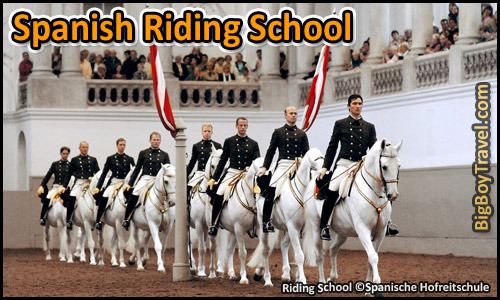
About Spanish Winter Riding School : The Spanish Riding School has been operating in Vienna since 1565 when it was a wooden stable in nearby Josefsplatz Square making it the oldest riding school in the World . The beautiful Spanish Winter Riding School building you see today was built into Hofburg Palace in 1735 in place of the former Paradise Garden.
This historic riding school gets its name from the stars of the show, the delightful white Lipizzaner horses from Spain. Getting accepted into the Spanish Riding School has always been a very prestigious thing. In its early days, the riding school was limited to young aristocrats and royals who used it to practice jousting and horse dancing called dressage. The horse dance training helped the riders the gain agility and control needed military campaigns. Outside of occasional public festivals, watching the horse dancing practices were reserved for the Royal family and guests of the court until the monarchy fell in 1918 which opened the shows up to the public.
Tickets for the horse dancing shows can be hard to come by so make sure to book ahead if possible. Even if you can’t make a dressage show, consider one of the school’s architectural tours that brings you through every nook and cranny of the building including the rafters. In addition to the horse ballet shows, the training space also hosts a series of elegant Viennese Balls throughout the year.
Across the street from the Winter Riding School is the Renaissance-style Royal Horse Stables ( Stallburg ) . The stables were first built from 1559 to 1569 as a mansion for crown prince Maximilian II by his dad Emperor Ferdinand I. Folklore says that the Emperor wanted his son under a different roof as they had differing religious views. The mansion later housed part of the royal art collection which helped to launch Vienna’s Art History Museum. When the new Winter Riding School opened in 1735, the mansion was turned into the official Royal Horse Stables and is now an active museum.
Ticket Office Hours : Tuesday-Sunday 9am-4pm; on Fridays when there is a performance they are open until 7pm. Morning Exercise : Most weeks Tuesday-Friday from 10am-Noon you can watch Morning practice to music for 15€ which is lighter on the jumping. Check the schedule here as some months have training every day. You book at the box office each morning. Main Performances : The full dressage show performances typically happen on Saturday and Sundays at 11am and can sell out far in advance. Standing tickets room start out at 25€ and go up to 135€ for the lower level seats. You can book online here or at the box office. Please note that from late-June through early-August they typically don’t run the full show, but will have practice. Guided Tours : Most afternoons they have 2-5 time slots for 50-minute guided tours of the grounds and stable for 18€ ( kids half off ) with the most time slots on Mondays while the horse training is off. You can book at the box office each morning. Riding School Website : ( Here ).
18. Joseph’s Square ( Josefsplatz ):
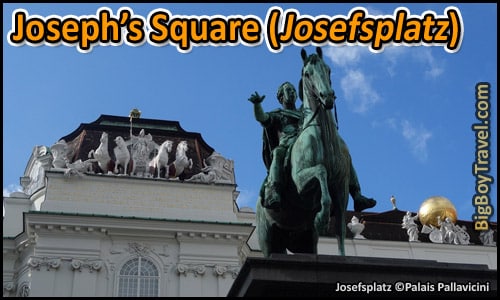
About Joseph’s Square : Before checking out the beautiful National Library, it is essential to inspect the often overlooked Joseph Square ( Josefzplatz ). Today the main feature of the square is the giant equestrian statue from 1795 of Emperor Joseph II in Roman clothing riding a horse.
The equestrian statue is actually a take on an ancient statue of Roman Empire Marcus Aurelius which sits on Capitoline Hill in Rome, Italy. The connection is important both because Marcus Aurelius died in the Roman camp Vindonba ( early day Vienna ) in 180 AD and the Habsburgs always claimed to have a bloodline connection to the Roman leaders. This equestrian statue is also fitting as Joseph Square was once the home to the original Spanish Riding School back when it was just a small wooden structure.
As you circle the square, there are a couple of old mansions that are worth mentioning. The 1st is the beautiful Pálffy Mansion ( website ) which served as a law office in the 1300s, was rebuilt as the home of a banker in the 1600s, and given a new facade after damage from WW2. Mozart performed at Pálffy Mansion as a child and did screenings of this opera The Marriage of Figaro with a small audience before premiering it at the Royal Theater that once sat a block away at Michaelplatz. Every night at 8pm ( except Wednesdays ) you can get tickets for the Vienna Walzer Orchestra which performs for small crowds just like Mozart once did here.
Next door to Pálffy Mansion is the impressive Pallavicini Mansion ( website ) which was once the site of the Queens Monastery ( 1581-1782 ). Unlike Palffy, this mansion was largely untouched by WW2 and serves as a time capsule for Viennese life in the late 1840s.
On the South side of the Joseph’s Square is the former Augustiner Monastery Complex ( built in 1327 ), which still has some of its original inner courtyards and main chapel. The monks had been operating in Vienna since 1260, and Pope John XXII directly approved the building of this complex. The small Loreto Chapel next to the main altar holds the hearts of various Habsburg rulers. Earlier in this Vienna walking tour, we saw the royal bodies in the Imperial Crypt and their guts in Saint Stephen’s Cathedral. The church probably the most famous as the place of many Habsburg imperial weddings including that of Marie Louise to Napoleon Bonaparte in 1810.
19. Austrian National Library :
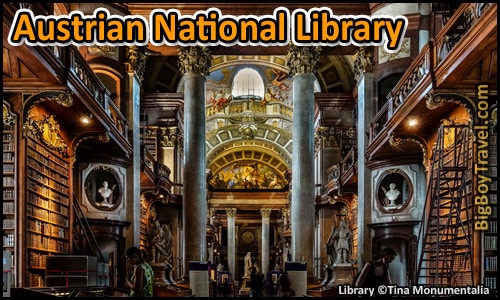
About The Austrian National Library : Built by Emperor Charles and Empress Maria Theresa from 1720-23, the Austrian National Library remains one of the most beautiful libraries in the world to this day. It is easy to find the entrance as the building is capped by a large golden globe supported by a statue of the Greek God Atlas. A walk through the Baroque State Hall is bound to leave any visitor with a sense of wonder.
The library’s marble accents are fantastic and the ceiling paintings are among some of the best for any building of its era. The paintings are so detailed that it’s no wonder they took an extra 7 years to complete after the library was open. The scenes show the virtues of the Hapsburg rulers as well as depictions of their territories.
The Habsburg Dynasty was a dominant one who had already had a private library collection started as early as the 1300s. This meant that the new library was able to be filled with over 400 years of treasures the day it opened. Mix in an over 300-year span where the Hapsburgs served as Holy Roman Emperors ( 1483–1806 ), you have the makings of one of the best book collections in the world . Construction plans even had to be expanded mid-build in the 1700s as the family’s collection continued to grow.
Two of the most popular exhibits run by the library are the impressive Papyrus and Globe Museums. The Papyrus Museum is best accessed through the reading rooms entrance of Heldenplatz ( Stop 21 ) while the Globe Museum is just down the street ( Herrengasse Avenue #9 ).
Library Hours : Daily 10am-6pm; Open Thursdays until 9pm. Cost : 7€ for State Hall; Add for 4€ the Papyrus and Globe Museums; Discounts for kid & families. Audio guide 5€ for 2 people. Library Website : Here .
20. Hofburg Castle’s Swiss Court ( Schweizerhof ):
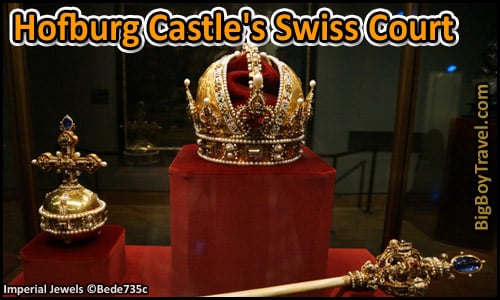
About The Swiss Court : This was the original portion of today’s Hofburg Palace ( or Imperial Castle ), built from 1220 to 1278 as a square Gothic castle with corner towers. The most construction happened along the expanded city walls under Ottokar II who became the Duke of Austria in 1251 and also soon became the King of Bohemia ( 1253-1278 ). After failing to win the Imperial crown numerous times and raising arms about it, Ottokar II was crushed in battle in 1278 and his castle was taken by the Habsburg who ruled Austria for the next 750 years ( 1278-1918 ).
Only fragments of the original castle remain today as it was given a Renaissance makeover in the 1400s. This project included a complete rebuild of the Palace Chapel ( Burgkapelle ) in 1449. A beautiful wooden statue of the Virgin Mary near the altar was carved in 1410 and is quite stunning. The royal chapel was first established in 1296 ( remodeled again in the 1700s ) and is famous for the angelic Vienna Boys Choir ( website ) who have been signing High Mass since 1498. They are one tour in July & August so if you miss out on the Boys Choir, the nearby Augustiner Church ( built in 1327 ) also has music at their 11am religious services.
In 1745, the original castle got another facelift during an expansion of the Palace, and the central courtyard was renamed the Swiss Court ( Schweizerhof ) after the guards who protected the Royal family. This substantial makeover also saw the removal of the corner towers and the castle’s drawbridge which once led to the preserved red-black Swiss Gate ( Schweizertor ) from 1552. The impressive gate displays the Holy Roman Empire’s Imperial Coat of Arms in the variation of the Order of the Golden Fleece which is a secret Medieval fraternity established in 1430. On the ceiling inside the Swiss Gate are murals showing the titles and lands ruled by Emperor Ferdinand I.
The core of the former castle now houses the Royal Treasury in over 21 Medieval rooms. While touring the Treasury, you will see the jewels of the Holy Roman Empire, including the Imperial Crown and the Holy Lance, the Crown of Emperor Rudolf II, and gems including one of the world’s largest emeralds. You will also see a ton of Holy Relics in the Treasury as the Habsburgs had become obsessed with collecting them as a status symbol. There are items from the Order of the Golden Fleece, and Counter-reformation among other secular treasures. Our favorite piece is the giant narwhal tooth from the 1500s which Medieval times was believed to be a unicorn horn.
Hofburg Treasury Hours : Wednesday-Monday 9am-530pm; open until 6pm in July and August; Closed Tuesdays. Admission Cost : 11.50€ for Adults; 10.5€ for Kids; which includes an audio guide. Royal Treasury Website : ( HERE ). Imperial Chapel Hours : Chapel is available for Free Mondays & Tuesdays 10am-2pm & Friday 11am-1pm. Vienna Boys Choir Shows : From September through June you buy a ticket can hear the Boys Choir sign in the chapel most Sundays at 9:15am. Vienna Boys Choir Tickets : You can buy tickets online here or on Fridays in person. Tickets are 5-29€ plus there is free stand room only tickets available for the first 60 people in line. Vienna Boys Choir Secret : You only hear and don’t see the Boys Choir with your ticket, but you can watch it on a screen for FREE in the small lobby to the right of the Chapel entrance. Imperial Chapel Website : ( HERE ).
21. Hofburg Imperial Apartments :
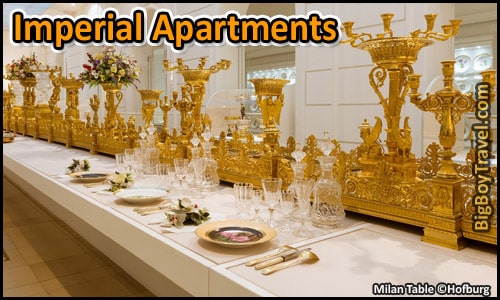
About The Imperial Apartments : The Imperial Apartments are our favorite part of the Hofburg Palace as they were the residential and state rooms used by Emperor Franz Joseph I and his wife Elizabeth , known as Sisi. The apartments are filled with over 165,000 pieces of original furniture from the Hapsburg Dynasty spanning over 300 years. There is also a section for the over-the-top Imperial furniture and a small museum dedicated to Sisi which includes many of her preserved dresses.
If you think the apartments and decor are fancy, just wait until you check out the Royal Sliver Collection ( website ). It seems like there is an endless amount of wealth on display, but they actually only display about 7,000 of the Habsburgs over 150,000 silver and gold items at a time. Our favorite part of the collection is the golden centerpiece spanning the entire length of the 90-foot-long Milan Table . The amazing work was commissioned for the coronation of Emperor Ferdinand in 1838.
Hofburg Palace Hours : Daily 9am-530pm; open until 6pm in July and August. Admission Cost : 15€ for Adults; 9€ for Kids; which includes an audio guide. Guided Tours : A guided tour is required to see the Imperial Apartments and Sisi Museum. They last for 55 minutes, leave daily at 2pm and adds only 2€ to admission cost. Combined Sisi Ticket : The Sisi ticket ( 34€ for Adults; 21€ for Kids ) is the best deal as it includes Schönbrunn Palace, Imperial Furniture Collection, Hofburg with the Imperial Apartments, Sisi Museum, and the Imperial Silver Collection.
22. Hero’s Square ( Heldenplatz ):
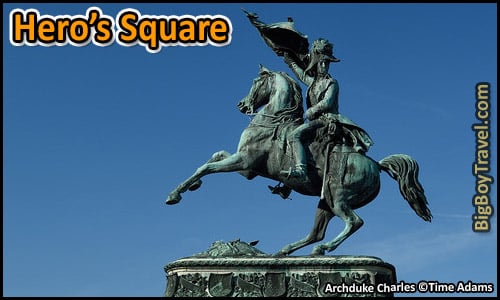
About Hero’s Square : As enter the large Hero’s Square ( Heldenplatz ) you’ll quickly get drawn to the backdrop of the beautiful Neue Burg Wing ( New Castle ), but the square itself is worth investigating. Heldenplatz and 2 other large gardens ( Burggarten & Volksgarten ) were laid out after parts of a Medieval castle wall that stood here were destroyed Napoleonic Wars.
While the other Gardens in Vienna have remained green, most of Heldenplatz has been paved over during the decades. Luckily a couple of the original equestrian statues still remain in the square. The first great statue is Archduke Charles of Austria riding a horse while triumphantly holding a flag. The statue of Charles, erected in 1860, was meant to portray the Habsburg Dynasty as great Austrian military leaders.
While the statue of Archduke Charles is cool, our favorite is of Prince Eugene of Savoy which sits right by Neue Burg’s main entrance. Eugene left France for Austria after being denied entrance to their military for appearance and went on to become the greatest General in Austrian history. He led military campaigns for 60 years over 3 different Holy Roman Emperors based out of Vienna and was very successful. Eugene’s claim to fame with battles over the Ottomans later gaining heavy praise fro Napoleon all while getting super rich from his endeavors. To this day Eugene serves as a point of Austrian pride and willpower.
If you want more of a true garden experience visit the People’s Garden ( Volksgarten ) on the Northern end of Hero’s Square. This garden, featured in our Vienna Ring Tram Tour has a wonderful rose garden, a replica of the Greek Temple Hephaestus ( Theseion ), and a memorial to Empress Sissi.
Before leaving Heldenplatz, make sure to check out the huge gateway going over the road on the South side of the square called Outer Castle Gate ( Äußeres Burgtor ) . The columned gateway is all that remains from a curtain wall built around the Palace in 1817 after the original castle wall was damaged during the Napoleonic Wars in 1809.
This new Palace wall section didn’t last long as it and the entire Medieval wall that surrounded all of Old Town Vienna were torn down in 1860 by Emperor Franz Joseph I to making way for the Ringstrasse loop. This move helped the growing city expand and was part of a large series of enhancements the Emperor made to the City.
23. New Royal Palace ( Neue Burg ):
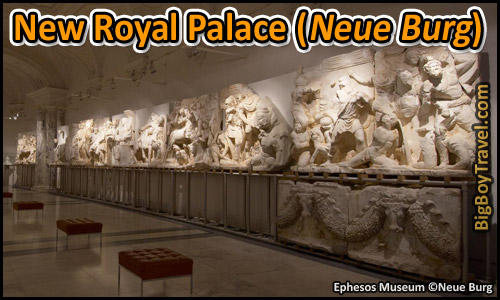
About The New Royal Palace : Emperor Franz Joseph’s had a dream of creating Kaiserforum complex to how off Austria’s might through architecture and arts. As seen in this 1865 mockup sketch , the complex covered the Neue Burg Wing ( or New Castle ) wing of Hofburg Place, the Museum Quartier, and numerous other buildings.
The huge Neue Burg section was started in 1881, but its construction was drug out for over 30 years into the beginning of WW1 which Austria lost, further delaying the project. Because of the lengthy, delays most of the rest of the Kaiserforum complex was scrapped for the most part, but overall the completed buildings are really impressive.
Once inside Neue Burg, it is easy to be in awe of the marble-lined corridors, grand staircases, and our favorite is called the Hunting Plateau which is a common place for weddings. The amazing details of the grand Neue Berg make it the perfect setting for the building many museum collections. The 1st collection that was housed here came from Archduke Franz Ferdinand in 1908 after he got back from an extensive trip around the World. After Archduke Franz Ferdinand was assassinated in 1914, which sparked WW1, his entire collection was given to Neue Berg giving a starting to a series of wonderful museums.
Today the building houses Papyros Museum, Ephesos Museum ( website ) , Collection of Ancient Musical Instruments and the Collection of Arms and Armor ( website ) which takes up the entire Southside. Our favorite of these museums is the Ephesos which has a great collection of classical and even ancient statues. The highlight of the Ephesus Museum is the Parthian Monument, part of an antique altar erected at Ephesus ( modern-day Turkey ) during the Hellenistic Period. In Roman times, Ephesus was the capital of the Province of Asia and one of the largest early-Christian communities in the world with around 200,000 inhabitants.
Neue Burg Museum Hours : Wednesday-Sunday 10am-6pm; Closed Monday & Tuesdays. If you only have time for one museum stop, consider the world-class collection of museums at nearby Museum Quartier instead of Neue Berg. Museum Cost : 15€ for Adults; Children are free; and guided tours are 3€ extra. Your ticket covers all of Neue Burg’s Museum plus the Art History Museum ( Kunsthistorisches ) in Museum Quartier. You can also get a combo ticket to include the Natural History Museum and Leopold Modern Art Museum for a couple of euros more. We’ve bought the combo ticket and they let us see the two museums on different days, but ask to make sure. Neue Burg Website : Here .
24. Museum Quartier :
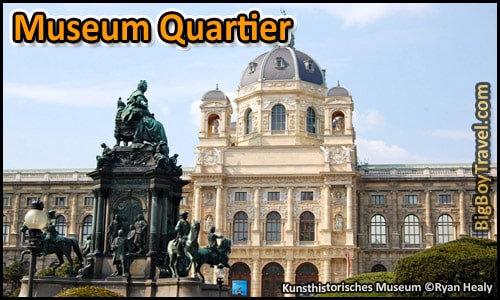
About Museum Quartier : As Emperor Franz Joseph designed his grand Kaiserforum complex, a series of museums built around a park was an integral part of his plans, but is was never fully completed. As seen in this 1865 mockup sketch , there were to be a ton of buildings, but at least the 2 large museums they did finish turned out to be masterpieces.
On the Eastside of the square is the highly rated Art History Museum , or Kunsthistorisches ( website ), which holds Vienna’s greatest collection of paintings covering very fun loving art from over a 200-year span. The Koonst as it’s called, also holds an amazing Egyptian Museum.
The twin building on the Westside of the Maria Theresa Square is the Museum of Natural History , or Naturhistorisches ( website ), whose vast collection holds Austria’s most famous work of art, the 4-inch-tall Venus of Willendorf Statue. This statue depicts a chubby, naked female figure carved into limestone and dates back to 24,000-22,000 BC.
Behind these two massive main museums is a third section worth a stop for any modern art lover, the Leopold Modern Art Museum ( website ) & Mumok Museum . Of favorite piece at the Modern Art Museum comes right away and is an upside down house home smashed into the side of the Museum called House Attack.
Art History Museum Hours : Tuesday-Sunday 10am-6pm; on Thursday until 9pm; Closed Mondays ( except June & August ). Art History Cost : 15€ for Adults; Children and teens are free, but a guided tour is +3€ and audio guide is +4€. Combo ticket with Neue Berg and Imperial Treasury is 20€ -or- with Neue Berg and Modern Art Museum is 24€. Natural History Museum Hours : Wednesday-Monday 9am-6:30pm; Wednesdays until 9pm; closed Tuesdays; best before Noon. Tours in English are every Friday, Saturday and Sunday at 3pm. Natural History Museum Cost : 10€ for Adults; Children and teens are free, but a guided tour is +3€ and audio guide is +4€. Modern Art Museum Hours : Tuesday-Sunday 10am-6pm; Thursdays until 9pm; closed Mondays. Modern Art Museum Cost : 13€ for Adults, students 8€, buy a mobile ticket online HERE . Combo ticket with Kunsthistorisches and Neue Burg is 24€.
Other Sights Near Old Town Vienna:
25. ringstrasse tram tour :.
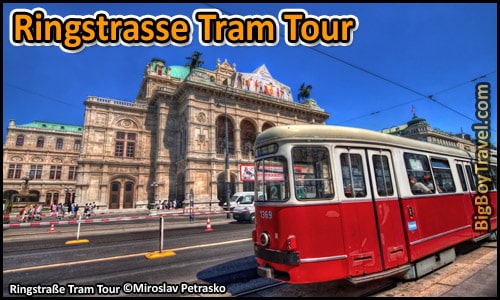
About The Ring Tram : When Vienna’s original Roman wall was expanded outward in 1257, it followed the path of today’s Ringstrasse. This new wall was very heavily fortified with watchtowers & bastions, was surrounded by a moat, and ringed with a wide building-free meadow ( glacis ) separating the city from the suburbs. This protection helped Vienna fight off the Turkish Sieges of 1529 & 1638 which may have saved the rest of Europe from being overtaken.
In 1860, the growing city of Vienna needed more room so Emperor Franz Joseph I tore down the Medieval wall and filled in the former moat that circled old town to create today’s grand boulevard. This was a boom time for Vienna and grand buildings sprung up all along the new Ringstrasse circling around Vienna.
Thanks to a modern system of tram lines, making the mile loop around the Ringstrasse to check out the sights is super easy. The entire loop can be done in less than 30 minutes , but we suggest hopping off at various points to explore and fully experience the Ringstrasse attractions. To help make your trip a smooth one we have put together a great guide to the best sights and tips for using the trams along with a helpful printable map.
Read More : Vienna Ring Tram Tour .
26. Saint Charles Church ( Karlskirche ):
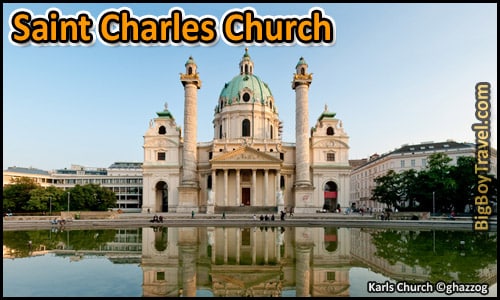
About Saint Charles Church : The giant white St. Charles Church dates back to the early 1700s and is a favorite of photographers with its large green dome and huge reflecting pool . The Church was commissioned by the Emperor after Vienna’s last bout of Plague as he felt that his prayers were the reason why the Plague stopped. This train of thought was a common theme throughout Vienna’s history as after each tragedy the ruling Emperor would use the event as a reason to build an even bigger and more extravagant Church.
Cost : 4€. Hours : Daily 9am-7pm. Website : HERE .
27. Naschmarkt :
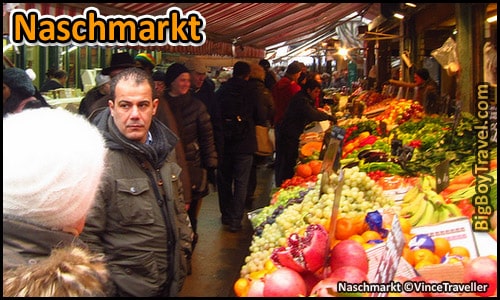
About Naschmarkt : The 6 block long Naschmarkt is Vienna’s most popular produce market. An active market has been operating here since 1780 and today has 100 vintage stalls.
Cost : Free. Hours : Stalls open Monday-Friday 6am-7:30pm; Saturday 6am-6pm; food & drink Monday-Saturday until 11pm. Website : HERE .
Featured Article

Sign Up For Our Newsletter For Free Travel Tips
Email Address *
Disclaimer: Information on this page and in our walking tours were deemed accurate when published, however, details such as opening hours, rates, transportation, visa requirements, and safety can change without notice. Please check with any destinations directly before traveling.

Vienna City Walks – 11 Sightseeing Routes (Free Video Tour Guides)
Last Updated on March 10, 2024 by gregor
Walking in Vienna. Fortunately, Vienna offers numerous opportunities to spend a few nice hours outdoors and not only enjoy nature but also Viennese architecture. The good news is these are all Free Walking tours in Vienna;-) Below I will tell you what are the most beautiful Vienna City walks and sightseeing routes in Vienna.
These places are best for walking tours in Vienna
Old City Center Walks, 1010 Vienna
Vienna’s city center has been a UNESCO World Heritage Site since 2001. The most important sights, which you can easily reach on foot, are located in an area of approx. 3km². This is definitely one of the most beautiful places to walk in Vienna.
- Historic facades, churches, fountains, and monuments.
- eat in excellent restaurants
- Many traditional Viennese coffee houses (Cafe Central Demel, Sacher, Hawelka, Sluka,..)
Top Tip: Enjoy Vienna by night. Sunset to Midnight is the best time for a night walk
How do I get to the Old City Center in Vienna?
The easiest way to explore the old inner city of Vienna without a tourist guide is from Schwedenplatz. Simply get off at the Schwedenplatz underground station (lines U1 or U4) and walk up from there in the direction of Stephansplatz!
Here is a BLOG ARTICLE with the full Old City Center walking Tour in Vienna and a YouTube VIDEO featuring the whole tour!
VIENNA’S OLD HISTORIC STREETS IN THE CITY CENTER, AUSTRIA
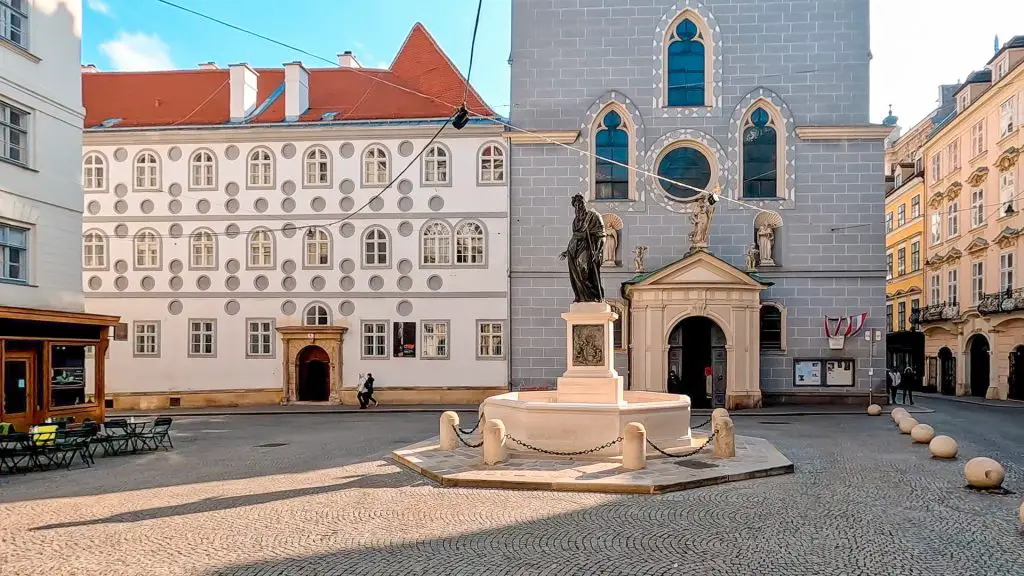
Vienna Government District Walk, 1010 Vienna
Vienna Government District is near the Hofburg Palace in the City Center. A great Vienna City Walk which features a lot of Historic Buildings and Palais, and the famous Minoriten Square and Minoriten Church
Highlights:
- 00:00 Presidential office (Ballhausplatz)
- 01:13 Federal Chancellery (left side)
- 02:20 Ministry of Interior
- 02:24 Ministry of Foreign Affairs
- 02:27 Minoriten Church
- 02:35 Minoriten Square
- 05:22 Palais Dietrichstein
- 05:27 Palais Liechtenstein
- 05:30 Ministry of Education & Science
- 07:04 Palais Niederösterreich (left side)
- 07:52 Minoriten Square
How do I get to the Government District in Vienna?
The easiest way to explore the Government District of Vienna is from Karlsplatz. Simply get off at the Karlsplatz underground station (lines U1 or U4) and walk up from there in the direction of Hofburg!
Here is a VIDEO with the full Vienna Government Center walking Tour in Vienna featuring all the sightseeing highlights!
Vienna Luxury City Center Walk, 1010 Vienna
A luxury Street Walk from the St. Stephens Cathedral via the Graben, Kohlmarkt, and Herrengasse. If you love (window) shopping this is definitely the perfect walking tour in Vienna for you.
The shopping area of Top Luxury Brands
- 00:00 Intro and St. Stephen’s Cathedral
- 03:00 The Graben Luxury Shopping Street
- 07:15 Kohlmarkt Luxury Shopping Mile (Gucci, Dior, Tiffany’s,….)
- 09:29 Hofburg Palace + Michaeler Tor
- 12:29 Herrengasse
- 17:13 Cafe Central – World Famous Viennese Coffee House, let’s have a look at the delicious pastry and taste a Truffle Cake + Melange (Viennese Cafe) Yummy,…
How do I get to the Luxury Streets in Vienna?
The easiest way to explore the Luxury Streets in the city center of Vienna without a tourist guide is from Stephansplatz. Simply get off at the Stephansplatz underground station (lines U1 or U3) and walk up from there in the direction of Stephansplatz!
Here is a VIDEO with the full Luxury Streets City Center walking Tour in Vienna featuring all the sightseeing highlights!

The Ringstrasse Walk, 1010 Vienna
Walking the Ringstrasse Vienna can take you about 1-3 hours. (The Ringstrasse is 5.3 kilometers long). A city walk to accommodate numerous monumental buildings built during Historicism in the 1860s to 1890s. The buildings erected there – from the State Opera to the Art History Museum – are among the most important sights in Vienna today.
- 00:00 Intro – Schwarzenbergplatz
- 00:14 Hotel Imperial – 5* luxury Hotel
- 01:30 Vienna State Opera
- 05:16 Heldentor
- 05:31 Hofburg – Heldenplatz – Emperor Palace
- 07:00 Michaelertor – Michaeler Square
- 11:19 Heldentor
- 11:39 The Kunsthistorisches Museum Wien (Art History Museum) left
- 11:45 The Naturhistorisches Museum Wien (Nature History Museum) right
- 13:21 Austrian Parliament
- 14:06 Burgtheater
- 14:52 Rathaus (Vienna Town House)
- 16:03 University of Vienna
- 17:30 Votiv Church – Votivkirche
- 19:06 Wiener Börsengebäude (Vienna Stock Exchange)
- 21:02 Franz Josefs Kai
- 24:55 IBM Building
- 25:05 Schwedenplatz
- 27:54 Urania Wien
- 30:24 MAK Museum für Angewandte Kunst (Museum of Applied Arts)
- 31:13 Stubentor
- 32:04 Stadtpark
- 32:28 OPEC Vienna
- 33:12 Palais Coburg (in the back white Building)
- 33:19 Marriott Hotel Vienna
- 33:42 Almanac Hotel (planned opening Mid of 2022)
- 33:47 Weihburggasse
How do I get to the Ringstrasse in Vienna?
The easiest way to explore the Ringstrasse in the city center of Vienna without a tourist guide is from Vienna State Opera. Simply get off at the Karlsplatz underground station (lines U1 or U4) and walk up from there in the direction of Vienna State Opera!
Here is a VIDEO with the full Ringstrasse walking Tour in Vienna featuring all the sightseeing highlights!

The Stadtpark Walk, 1010 Vienna
In the city park, there are picturesque meadows, large water areas, and ornamental shrubs. Large avenue trees shield the park from the ring road. Some rare trees are protected, for example, ginkgo, Christ’s thorn, a pyramidal poplar, and a Caucasian wingnut.
- The Stadtpark has the most monuments and sculptures of all parks in Vienna.
- The most famous is the Strauss monument.
- Top Restaurant: Steirereck and Meierei
How do I get to the Stadtpark in Vienna?
The easiest way to explore the Stadtpark in the city center of Vienna is from Karlsplatz. Simply get off at the Stadtpark underground station ( U4) and walk up from there in the direction of Stadtpark!
Here is a VIDEO with the full Stadtpark Walking Tour in Vienna featuring all the sightseeing highlights!

The Burggarten Walk, 1010 Vienna
The Burggarten is located on the Ringstrasse and is laid out in the English style. The Palmenhaus is also located here, one of the most beautiful Art Nouveau glass houses designed by Friedrich Ohmann.
- Mozart Statue
- Emperor Franz Joseph Statue
- Nice places to sit and relax
- Take a PicNic with your friends
- Palmenhouse
How do I get to the Burggarten?
The easiest way to explore Burggarten Park in the city center of Vienna is from Karlsplatz. Simply get off at the Karlsplatz underground station ( U4) and walk up from there in the direction of Opera/Burggarten!
Here is a VIDEO with the full Burggarten walking Tour in Vienna featuring all the sightseeing highlights!

The Naschmarkt Walk, 1040 Vienna
The Naschmarkt in Vienna is the most famous food market in Vienna, with around 120 market stalls and restaurants.
- It offers a wide range of culinary delights, from Viennese to Indian, from Vietnamese to Italian.
- The Naschmarkt Wien has become a meeting place for young and old.
- The flea market on Saturday is already a cult.
How do I get to the Naschmarkt?
The easiest way to explore the Naschmarkt in the city center of Vienna is from Karlsplatz. Simply get off at the Karlsplatz underground station ( U4) and walk up from there in the direction of Naschmarkt!
Here is a VIDEO with the full Naschmarkt walking Tour in Vienna featuring all the sightseeing highlights!

Belvedere Palace Gardens, 1040 Vienna
Belvedere Gardens Vienna is one of Europe’s most significant historical gardens, a fine example of late Baroque garden design.
- the pools that mirror the building’s façade
- the Palace Gardens
- the privy Gardens
- the Botanical Garden
The Botanical Garden is the oldest of its kind in Europe with a valuable historical collection of Alpine plants. Wonderful attractions include the rhododendrons, the variety of Sempervivum, and the Japanese Bonsai.
How do I get to the Belvedere Palace?
The easiest way to explore the Belvedere Gardens in the city center of Vienna is from the Hauptbahnhof. Simply get off at the Hauptbahnhof underground station ( U1) and walk up from there in the direction of Belvedere!

Schönbrunn Palace Park Walk, 1130 Vienna
A walk through the park of Schönbrunn Palace is always a good idea! The sprawling grounds are particularly beautiful in autumn when the leaves are shimmering in rich, bright colors.
- The Gloriette
- Roman Ruins
- Beautiful Fountains
- Numerous squirrels
How do I get to Schönbrunn Castle?
The easiest way to explore the Schönbrunn Castle in Vienna is with the U4 Underground. Simply get off at the Schönbrunn underground station ( U4) and walk up from there in the direction of Schönbrunn!
You can find out more about Schönbrunn Palace Park (Quick Guide) here.
Here is a VIDEO with the full Schönbrunn walking Tour in Vienna featuring all the sightseeing highlights!

The Green Prater, 1020 Vienna
The Vienna Prater is a perfect walking destination because the possibilities here are endless.
- Prater Hauptalle – The main avenue is 4km long perfect for joggers
- Meadows and forests
- the Heustadelwasser
- the Sulzwiese
- Famous Ferries Wheel
Rent a Bike! The Green Prater is huge (= Duble the size of the Central Park in New York! ) More about Bike Rental in Vienna read here:
BIKE RENTAL IN VIENNA – EVERYTHING YOU NEED TO KNOW – WIENMOBIL RAD (VIDEO TOUR)
How do I get to the Prater in Vienna?
The easiest way to explore the Green Prater in Vienna is with the U1 Underground. Simply get off at the Praterstern underground station ( U1) and walk up from there in the direction of the Prater!
Here is a VIDEO with the full Donauinstel walking Tour in Vienna featuring all the sightseeing highlights!

The Danube Canal, 1020 Vienna
In summer, many people cannot imagine life without the Danube Canal with its pubs and the associated holiday feeling. A perfect evening walking tour in Vienna.
- There is a lot going on here when the weather is nice
- especially between Schwedenplatz and Schottentor a lot of restaurants and bars.
- the sometimes narrower, sometimes wider paths
- you almost forget that you are in the middle of the city.
How do I get to the Danube Canal?
The easiest way to explore the Danube Canal in Vienna is the Underground. Simply get off at the Schwedenplatz underground station (U1 or U4) and walk up from there in the direction of Donaukanal!
Here is a VIDEO with the full Donaukanal walking Tour in Vienna featuring all the sightseeing highlights!

Vienna by Night walk
During your stay in Vienna, I will really enjoy Vienna at night. For me, the most spectacular city night walks are in the city center and the view is from Kahlenberg.

Is Vienna a walkable city?
Vienna is very walkable. There are a lot of Public Parks and gardens along the Ringstrasse. Especially in the City Center, there are a lot of pedestrian zones
How to get around Vienna?
There are 4 Ways to get around Vienna.
By Public Transport, Vienna City Card
- Taking public transportation is the most convenient method to get around Vienna (Euro 8.- for a 24-hour ticket).
- A Vienna City Card , which permits unlimited use of the city’s metro, tram, and bus lines, can be purchased in advance.
- Vienna City Cards are available for 1, 2, or 3 consecutive days, and prices range from 24 hours for Euro 17, to 3 days of use + airport transfer for Euro 46.-.
The Vienna City Card also offers discounts at over 210 major attractions, making it an excellent value.
By Bicycle Rent a Bike in Vienna
- The city center of Vienna, and the majority of tourist attractions, are reachable by bicycle.
- WienMobil Rad is the most popular bike-sharing service in Vienna.
- Simply register online, find a terminal and scan the QRCode to unlock a bike.
- Detailed Information on How to Rent a bike in Vienna on my Blog:
There is also the very popular Classic Vienna: 3-Hour Guided Bike Tour available to book in advance.
By Hop On Hop Off Bus
The City Card provides access to standard buses throughout Vienna. There is, of course, the well-known Vienna Hop-on Hop-off Sightseeing Bus .
This Hop On Hop Off bus allows you to hop on and off at many locations throughout the city, including the Museums of the Hofburg, the House of Music, and the Schönbrunn Palace.
This choice is always popular amongst travelers, and it is a great way to see many of Vienna’s famous attractions.
By Guided Tour
There are some amazing tours available to book in advance on Get Your Guide for people who are short on time or prefer everything to be organized for them.
There’s much to do in the Austrian capital, from food tours to river cruises and bar crawls!
Hope you enjoy my selection of the most beautiful walking and sightseeing tours in Vienna.
BLEIB BERG Health Retreat Hotel – A complete guide including the F.X. Mayr Cure
Best things to do in vienna with kids – family holidays in vienna.

[An * means an affiliate relationship; see footer] City guide | Search the site | Tips for May
Visiting Vienna
Walking tour of Vienna
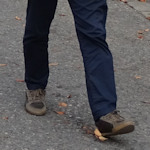
The compact centre makes it easy to walk between the sights in Vienna, but which route should you take? Here my suggestion for your walking tour, with insider tips along the way, links to detailed descriptions of sights, and information on guided alternatives.
- Route starts at the opera house and ends at the cathedral
- Includes the top sights in the centre
- Takes about 90 mins without too many pauses
- Book a tour of the city *
- Overview of Vienna tours
This is part 1, which takes you from the opera house to the edge of the central Hofburg complex.
Part 2 covers the Hofburg, Part 3 a section of the Ring, and Part 4 takes you back through the old town to the cathedral.
Walking route for the centre

(The west side of the opera house with its arched colonnade)
We shall begin at the main entrance to the Staatsoper opera house, since you can reach this easily from just about anywhere: either on foot from the centre or via trams to Oper/Karlsplatz (lines 1, 2, D, 62 and 71) or subway to Karlsplatz (U1, U2 and U4).
(Incidentally, if you’d prefer to tour the city from the comfort of a seat, then the opera house is a main stop for Vienna’s hop on hop off buses .)
The opera house
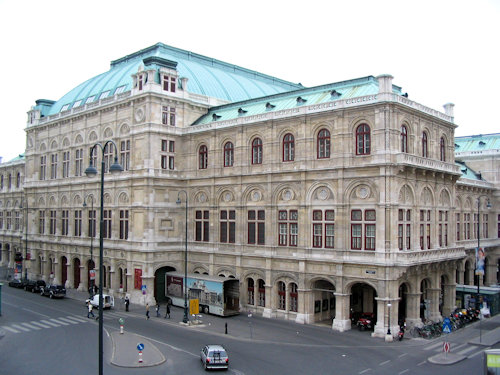
(The back of the opera house)
Opened in 1869, the Staatsoper counts as one of the world’s top opera venues and also provides a home to the state ballet.
Performances change each night thanks to an experienced ensemble and an orchestra drawn from the expert ranks of the Wiener Philharmoniker.
Despite the uniformly historical look, what you see of the building is only partly original: the rest is an accurate reconstruction after WWII bombing damage.
Casual visitors can view little of the interior. However, the opera house kindly hosts guided tours so you can walk around the insides without attending an actual performance.
As you face the main entrance of the Staatsoper, walk along to the left and take the road on your right (down the lovely colonnade that funnels you past the standing ticket office and the stage door).
This is Operngasse and leads into the centre.
The Albertina
As you emerge from the colonnade, look across to the other side of the road; you see a wall fountain and, above it, an equestrian statue with the Albertina palais and art museum behind:
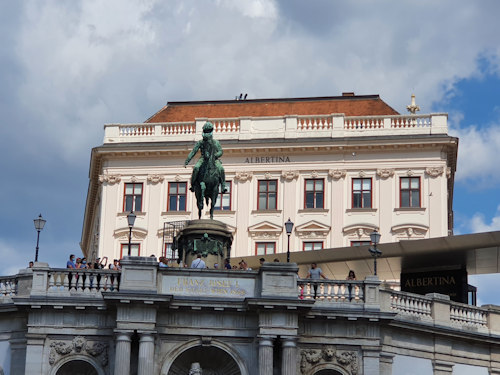
(The chap on the horse is Archduke Albrecht)
Cross over the road to walk past the Albertina on your left, but not before you take everything in.
The Albertina itself dates back to the 1740s. Once a home to various archdukes, it now houses an extraordinary collection of art.
A visit includes a permanent exhibition featuring the likes of Picasso, a self-guided stateroom tour , and a changing repertoire of special exhibitions that cover everything from Renaissance art to contemporary sculpture.

(View of the opera house from the Albertina platform)
The 1899 equestrian statue is Archduke Albrecht (1817-1895), one-time owner of the Albertina and Habsburg military personality.
The 1869 roadside Albrechtsbrunnen wall fountain has a river theme, with the personification of the Danube at its centre, his arm around Vindobona representing Vienna. The other figures all represent tributaries of the Danube.
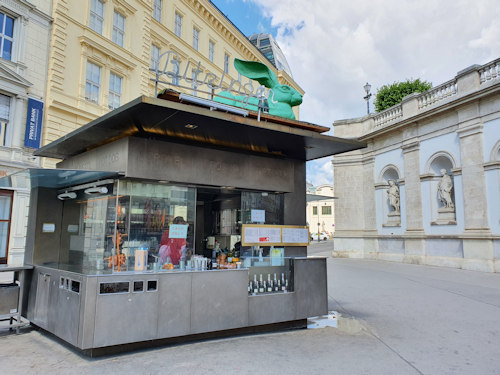
(Bitzinger sausage stand)
Two contrasting culinary treats sit nearby:
- The Bitzinger booth in front of the fountain might be Vienna’s most famous sausage stand and often has queues (Mick Jagger popped in on a recent Rolling Stones tour). The rooftop hare hints at the nearby Albertina’s most famous artwork: Albrecht Dürer’s 1502 Young Hare
- One of Vienna’s traditional coffee houses lives opposite the Albertina. Café Mozart has a long history that includes becoming a favoured haunt of the cast and crew of The Third Man

(Part of the monument against war and fascism)
An entranceway just behind the Bitzinger booth and opposite the Albertina offers another chance to experience some modern and contemporary art: the Heidi Horten Collection at Hanuschgasse 3 (home to special exhibitions drawing on that prestigious archive).
As you continue walking down past the Albertina, look back to see the museum steps with their artful stair painting and across to the monument against war and fascism by Alfred Hrdlicka (erected in 1988, which feels a little belated given the topic).
Augustinerkirche
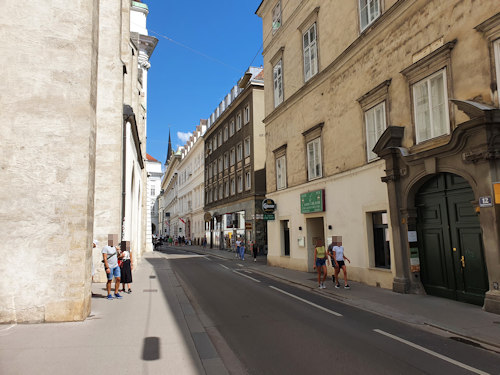
(Augustinerstraße)
You should now be following the pavement and road a little to the left down Augustinerstraße.
Before you leave the open square area, though, look right to spot the Theatermusuem building: the 17th-century Palais Lobkowitz hosted the first performances of Beethoven’s 3rd and 4th symphonies.
Your route now takes you down the side of the 14th-century Augustinerkirche , former long-serving court church to the Habsburgs.
The location presided, for example, over weddings for Emperor Franz Joseph (to the famous Sisi), Empress Maria Theresa, Napoleon Bonaparte, and King Louis XVI of France (the latter two in the absence of the grooms, which I didn’t realise was an option).

(The Sobiesky plaque)
The road continues past Dorotheergasse, which houses, for example, the Jewish Museum ‘s main site and the local cultural icon that is the Hawelka coffee house (try the Buchtel pastries).
Just after the junction with Dorotheergasse, look for a plaque on the outside wall of the Augustinerkirche bearing the name Jan Sobiesky.
The Polish king attended mass in the church on September 13th, 1683, fresh from defeating the Ottoman forces and lifting the siege of Vienna in a seminal moment for European history.
Josefsplatz
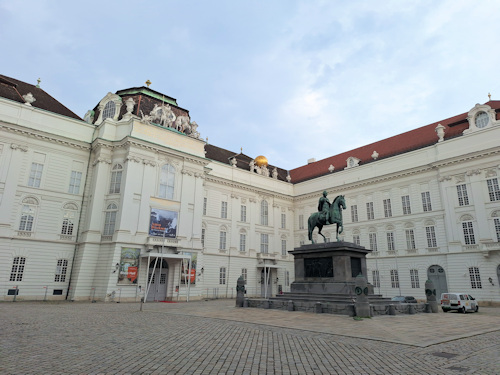
(Josefsplatz)
You now reach Josefsplatz square , which marks the effective boundary of the great Hofburg complex, one-time home to the Habsburgs.
Consider Josefplatz your first real taste of historical Vienna, since just about every building on it still looks much like it did decades or centuries ago.
As you continue down the road you pass two palais buildings on your right: Palais Pálffy (reconstructed after WWII) and the 18th-century Palais Pallavicini .

(The entrance caryatids to Palais Pallavicini)
The scantily clad statues outside Pallavicini led to some “excitement” at the time. More recently, that same portal and palais appeared in The Third Man as the home to Harry Lime, whose “fatal” road accident took place outside.
The square itself has the unassuming entrance to the Augustinerkirche on one side. Nip inside to see the remarkable 1805 Canova memorial for Archduchess Marie Christine , who died in 1798.
The side opposite the road has the entrance to the State Hall of the National Library. I would urge you to take a break and have a look at the so-called Prunksaal inside.

(Yeah, not your average municipal library. Good luck trying to borrow one of the books on display; press photo © Österreichische Nationalbibliothek/Hloch)
This is one of those libraries you see on Instagram: a towering haven of Baroque architecture, ceiling frescoes, and books that look like leather-bound grimoires full of dark magic.
The final side of the square is the exterior of the Redoutensäle rooms.
Habsburg monarchs put these chambers to good use for concerts, banquets, balls and various events intended to entertain and/or impress in equal measure. They now serve as administrative areas and (commercial) event locations.
And in the centre of the square we have yet another equestrian statue: this time from 1807 and featuring Emperor Joseph II (1741-1790) himself. (It seems spelling was more flexible back in the day.)
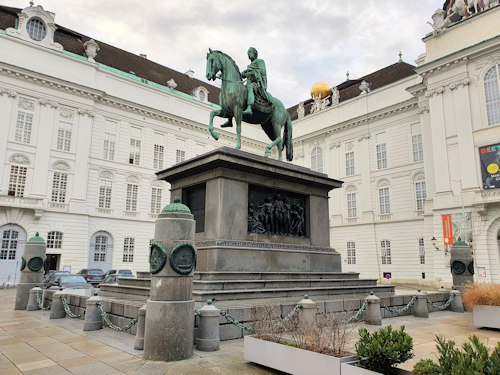
(The statue mimics the one of Marcus Aurelius that once stood on the Capitoline Hill in Rome)
The Joseph statue has reliefs on the surrounding pillars that represent events and accomplishments from the monarch’s reign.
Walk on past the square while keeping the road to your left and head toward the archways.
Before you reach the exit from the square, though, glance down the road leading away to the right (Bräunerstraße): Tanzschule Elmayer is one of Vienna’s more notable ballroom dancing schools.
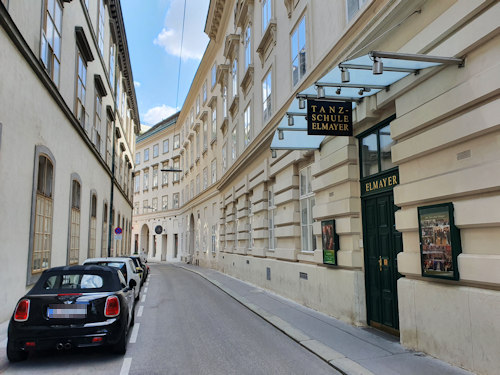
(You pass Bräunerstraße on your right)
The archways will take you to and past the Renaissance Stallburg stables used by the stallions of the Spanish Riding school. Here we’re now on the second part of your walking tour: the Hofburg and Habsburgs .
FREE TOURS VIENNA Free Walking Tour Vienna Historical City Center
Planning your first day in Vienna? For many travelers, the go-to choice is a Free Walking Tour! And in Vienna city, when you hear ‘Free Walking Tour,’ you know it means Prime Tours 😉 – the first Free Walking Tour Operator founded, financed and led locally.
- Guided tour by a licensed tour guide
- Must see and Must Do when in Vienna
- Vienna Highlights
- Tips & Tricks "How To Vienna"
- Most beautiful Vienna Monuments
When you arrive at the meeting point, watch out for a 🟡 yellow 🟡 PRIME TOURS umbrella. The guide will wait for you next to the Memorial against war and fascism
- Instant booking confirmation
- Secured spot with reservation
- Things to do in Vienna list online - get it after the tour from your guide!
- Tips for the guide (Recommended 15-20€)
- Entrance to the museums & concerts after the tour
- Food and drink
What to do in our on your first day? – a Free Walking Tour Vienna!
.. This would be the answer of many travellers. And we know, you know everyone knows in this city, they mean the Free Walking Tour Vienna by Prime Tours 😉
What to expect during this Vienna Walking Tour:
Our local, licensed guide will show you the historical center of Vienna and its most important sights. On this free tour, you will hear about the history of the city, and on the way check out the most important highlights of the city center.
So YES! it’s just perfect for your first day in Vienna. You will get a basic orientation about the city, tips on where to go next to explore Vienna, and have the opportunity to ask you questions at the end of the tour. What are you waiting for? Book your spot now! 😉
To all those, who want to know more before booking:
- On the Free Walking Tour Vienna City Center, You Will:
- Start at Albertina Square: Your adventure begins at Albertina Square, right next to the Monument Against War & Fascism, which tells stories about Vienna’s past.
- Explore Vienna’s Long History: Our friendly guides will show you how Vienna’s history goes way, way back.
- See Ancient Roman Walls: You’ll even get to check out really old Roman walls, like 2,000 years old! They’re super close to where we start the tour.
- Visit the Imperial Palace: We’ll take you to the Imperial Palace, where Emperor Franz and the famous Princess Sissi lived. It’s a place full of history.
- Stroll Down “Kärtner Straße”: We’ll wander along “Kärtner Straße,” a street where fancy people in Vienna like to shop, eat, and have fun.
- Enjoy the State Opera House: Take a moment to appreciate the beautiful State Opera House.
- Check Out Hotel Sacher: We’ll also pass by Hotel Sacher, known for the famous Sacher cake.
- Spot St. Stephen’s Cathedral: You can’t miss St. Stephen’s Cathedral, Vienna’s famous symbol. It’s huge and looks amazing!
- Learn About History: During our tour, you’ll hear stories about Vienna during World War I, World War II, and the time when the Nazis were in charge.
Where does the Tour End?
We will end our free tour of Vienna in front of the oldest church in the town, ST. Ruprecht’s Church is located in the famous “Bermuda triangle” which is a popular area for bars and clubs. Yes, our founders spent many many nights here during their teeny years – 100% recommendation for a fun nightout!
HOW MANY PEOPLE ARE ALLOWED ON TOUR?
Our Free Walking Tour is for solo travelers, couples or small group of friends – max. 4 persons. If you are a bigger group, please contact us via our contact form and we will give you a wonderful individual experience.
VIENNA IS AMAZING. MAKE YOUR LIFE AND TRIP EASY AND START WITH OUR FREE WALKING TOUR. NO EXCUSE ACCEPTED 😉
The tour is offered without a fixed price. If you valued the quality of the experience, you are welcome to tip the guide with the amount that you consider appropriate.
You can book the tour by going to our booking page and entering your details in the form. Afterwards you will receive a confirmation email with the date and time of your booked tour. Thats it! If you want to book the tour for groups larger than 5 people, please contact us via our contact form.
It always depends on your happiness after the tour. We recommend around 20€, but there is no limit to the top! 😉
No absolutely not. Guides depend 100% on your generous tip after the tour. So please always talk to the guide if you were not happy with the quality of the tour, otherwise the guide can’t improve the tour and if you were satisfied feel free to tip accordingly!
Our daily tours are provided in English, Spanish and German. If you like you get guided in any other language you are free to book a private tour through our contact page.
We do not have any break during this tour due to short duration of only 2h. Please make sure you go before the tour starts to the toilet. In case of emergency there are always public toilets or coffee houses on our way. Please let the guide know that you need to use a toilet.
Please check your booking confirmation for the cancellation policy.
We recommend always booking the tour in advance. Due to the high volume of tourists, it could happen that we need to exclude customers without a confirmed reservation.
**Save your spot today and book a tour now!**
During the tour you cannot call the guide. If you need help, please send an email to the Prime Tours service team ( [email protected] ) or call us +43 1 3911122.
Yes, in emergencies we may have to cancel the tour up to 4 hours before the start. In such a case, you will be notified in good time by email. Therefore, please check your emails 4 hours before the start of the tour. Unfortunately, it can also happen that not all registered participants appear. If there are fewer than 10 guests, the local guide can decide whether the tour is canceled spontaneously. It is therefore essential that you let us know in the event of a possible cancellation. Only then can we also inform the other guests in good time.
Take a look at our dedicated FAQs page. Of course you can also contact us. We are happy to help 😊
First glimpse into Vienna. Me and my friends did a Free Tour with Jan. It really was a great experience. The guide was always very welcoming and nice. Had a great speech, calm and understandable, in a great english. The explanations were clear, interesting, presented on a nice, easy (sometimes even funny) way and Jan managed to envolve the whole group with some questions. We got some great tips for other things to see and do in Vienna. It was a great first impression of this amazing city! Highly recommended!
Elizabeth was amazing! Very interesting tour which kept our interest the whole time despite the freezing cold on that day! Elizabeth explained the history of Vienna focusing on key landmarks with humor. Would definitely recommend. Thank you for the wonderful experience Elizabeth!
We had an interesting walking tour on Saturday with Katerina. She told us much about historic places and dates, showed most of the city centre. She was helpful and professional)
Stephan was a fantastic guide! I've done 3 different guided tours this week, and Stephan's was by far my favourite. He was funny and very enthusiastic. It was a cold day but I had such a good time on thr tour regardless of the weather. Highly recommended!
More about our vision , how we work and the startup story of Prime Tours.
Interested in working with us? Become a guide or join our affiliate program .

IMAGES
VIDEO
COMMENTS
On this 2-hour free tour you'll join your qualified local guide to admire the beauty of Vienna's stunning streetscape, illuminated spectacularly at nighttime! See all the main sights from an enchantingly different perspective, showing old-world Vienna at its romantic best. The Free Walking Tour: Vienna by Night starts at Helmut Zilk-Platz ...
Discover Vienna's charm at night with our Free Walking Tour! Join us for a romantic 2-hour evening tour and experience the city's most picturesque and less crowded parts. With a licensed guide, you'll explore Vienna's old town and learn about its rich history while having fun with fascinating stories about famous figures like Mozart, Beethoven, and Sigmund Freud. The tour takes you through the ...
The best Night Tours in Vienna according to Viator travelers are: Vienna Classical Concert at St. Peter's Church. Big Bus Vienna Hop-On Hop-Off Sightseeing Tour by Open-Top Bus. Hallstatt Day Trip from Vienna With Skywalk. Highlights of Vienna City Center Walking Tour.
16 Zürs. 17 Mühlbach am Hochkönig. 18 Obermoos. 19 Brixen im Thale. 20 Biberwier. Visit Vienna's darkest corners on a guided walking tour at night. Trace the haunted history of this old city with your guide and see highlights along the way, including Hofburg Palace and Neuer Markt.
The Burgtheater. The Burgtheater is only open until 6 PM so this should be your first stop of the night. It was first known as K.K. Theater an der Burg until 1918 and then the K.K. Hofburgtheater and is the national theater of Austria in Vienna. It opened in 1741 after the first theater was destroyed by fire in 1525.
Guru: Absolute Vienna Tours PRO. Free walking Tour through the center of Vienna. 2177 ratings. 4.9. Duration: 2h and 15min. Starts at: 11:00 and 15:30. sun.
Vienna at Night Free Tour Itinerary. Meet your guide at the scheduled time in Helmut Zilk-Platz, a square in the heart of Vienna city centre with incredible history.You'll begin your free walking tour of the Austrian capital admiring the Danubius Fountain in Albertinaplatz, a monument made even more beautiful by its nightly illuminations.. Continue your guided tour to the Burggarten, an ...
Step into the magical realm of Vienna as we embark on a mesmerizing Night Walking Tour in stunning 4K Ultra HD! Join us on a virtual journey through the hear...
Free walking tours in Vienna Night 16,280 opinions from other walkers about Vienna tours 4.79 16280 ratings. Laura 10 May 2024 Carbondale Verified booking Travelled in couple - May 2024 Very informative, kind guide provided interesting background to history, buildings, and heritage sites.
The average group size for this tour is limited to 10 participants, ensuring an intimate and personalized tour experience. Explore Vienna by night, indulging in delicious food and drinks while discovering hidden corners of the city. ... 25 Best Walking Tours In Tokyo; 8 Best Bike Tours In Osaka; 18 Best Day Trips From Munich In 2024; Romantic ...
The walking tour is approximately 5.5 km (3.4 miles) long and takes you past Vienna's highlights, the city's most iconic cafes, and through some of the city's main shopping areas. This walk can be rather demanding, particularly in the summer. Please take good care of yourself and take breaks when you need them!
See Vienna in a whole new light on a 2-hour evening walking tour. Led by a local guide, stroll along the charming squares and medieval streets while you learn the rich history and culture behind Austria's capital city. Pass top attractions, including St Stephen's Cathedral, Hofburg Palace, Vienna Opera House and Mozart's House. Upgrade your ticket to include a traditional Austrian dinner ...
Vienna Walking Tour Things to Know. In total, this free Vienna walking tour route is 3.5 miles or 5.6 km long. You can start and end at any point! ... These small food stands are all over the city and pump out different types of sausages from morning to night. We recommend ordering a Käsekrainer sausage which is traditional to Vienna, and ...
Experience the great history and modern day Vienna at the same time. The tour covers famous Viennese attractions, the most influential historical sights and delves into stories of past wars, triumphs and tragedies. Meet other travelers and discover Vienna's history, from its vast musical influences, through the dark Nazi era and its ...
The hippest free walk in town. We show you the best sights of Vienna within two hours. Explore the old town of this marvelous city with our young, fun and motivated licensed guides. Listen to fun facts and experience hidden gems and much more! When. EN: Daily at 11am, 03pm & 06pm. DE: Do - So um 11:30.
Stop outside St. Stephen's Cathedral to have a look. Waste your money at Casino Royale. Get yourself on to a nighttime walking tour that brings you all over the city to see the main sights in the dark. Enjoy a heavy night out in Vienna's nightlife district Schwedenplatz.
Vienna Walks. The "Old Vienna Walk" is a popular self-guided walking tour that takes you through the historic heart of Vienna, allowing you to explore its rich heritage, iconic landmarks, and charming streets. Start your walk right at the heart, as most of the best in town accumulates here. This walk combines sightseeing of Vienna landmarks ...
A night walking tour in Vienna: Must visit spots in the inner ring and around the city (updated 2023) There's something magical about walking through the streets of Vienna at night-time. It feels like a nice mixture of very old mixed and new combined into the historic district of the Ringstrasse ( historic center of Vienna). The cafes are ...
The guide leads you through multiple alleys and parts of the city to deliver you unforgettable memories! Discover the best of Vienna's Old Town on a 2-hour walking tour with a Private Guide. As you wander around the courtyards of the imperial Hofburg Palace, you will learn interesting facts and myths about Sisi and the House of Habsburg.
Walking Distance: 2.5 miles. Time: 90 minutes for walk ( with sights 4-5 hours) Fun Scale: 9.5 out of 10. The heart and soul of Vienna ( Wien) is by far its beautiful Old Town which is filled with historic sights. Modern buildings mix in with tons of Medieval and Renaissance elements, making the city center quite magical.
Top Tip: Enjoy Vienna by night. Sunset to Midnight is the best time for a night walk ... Here is a VIDEO with the full Luxury Streets City Center walking Tour in Vienna featuring all the sightseeing highlights! Watch this video on YouTube. The Ringstrasse Walk, 1010 Vienna. Walking the Ringstrasse Vienna can take you about 1-3 hours. (The ...
Here my suggestion for your walking tour, with insider tips along the way, links to detailed descriptions of sights, and information on guided alternatives. Route starts at the opera house and ends at the cathedral. Includes the top sights in the centre. Takes about 90 mins without too many pauses. Book a tour of the city *.
Request now for April 30, 2024. We don´t have any public availabilities on this day. However, you are welcome to request the tour as a private experience on the selected day. Book your spot here. Join the Free Walking Tour Vienna daily. Hear Stories about Sisi & Franz, the Habsburg, Hitler and see the historical highlights of Vienna.